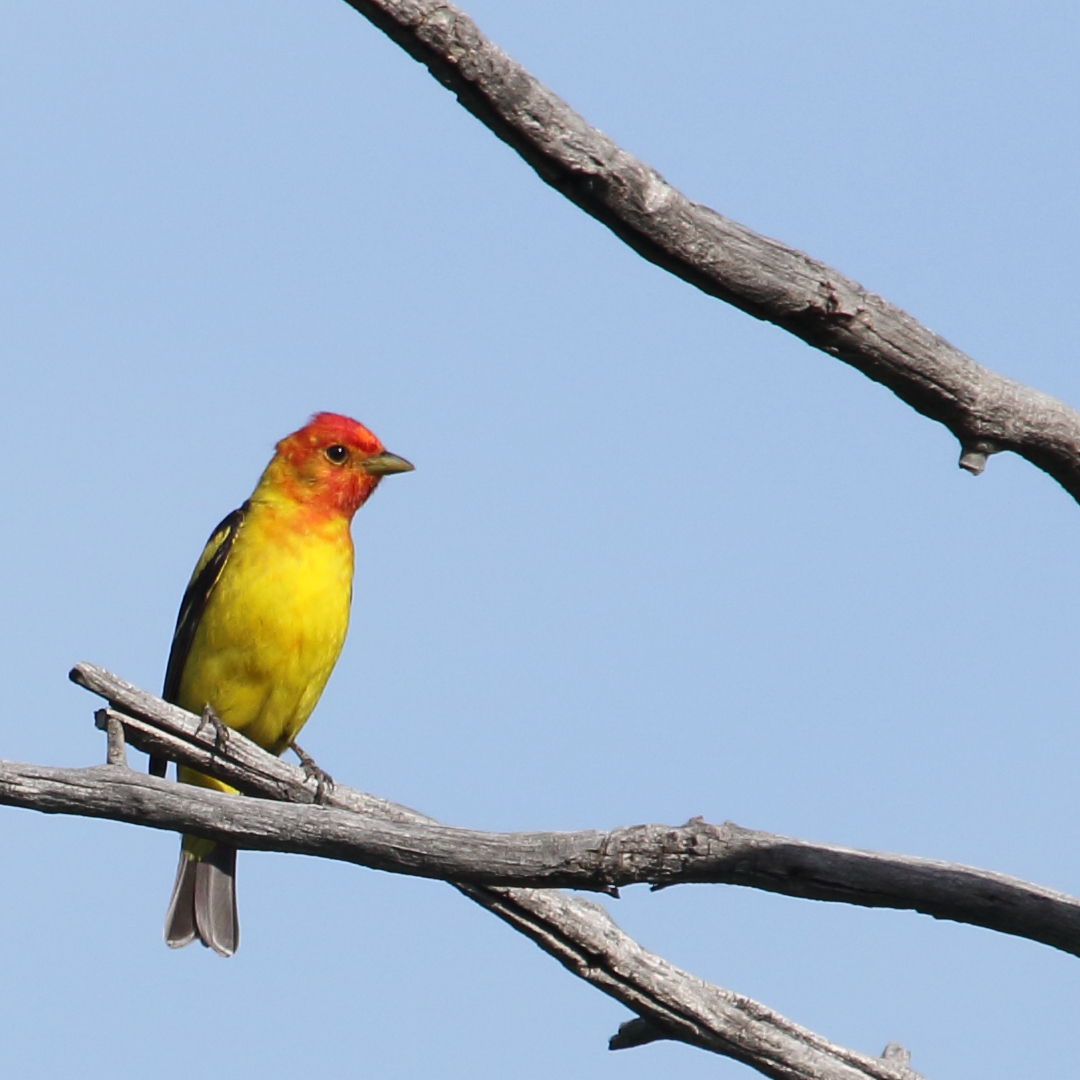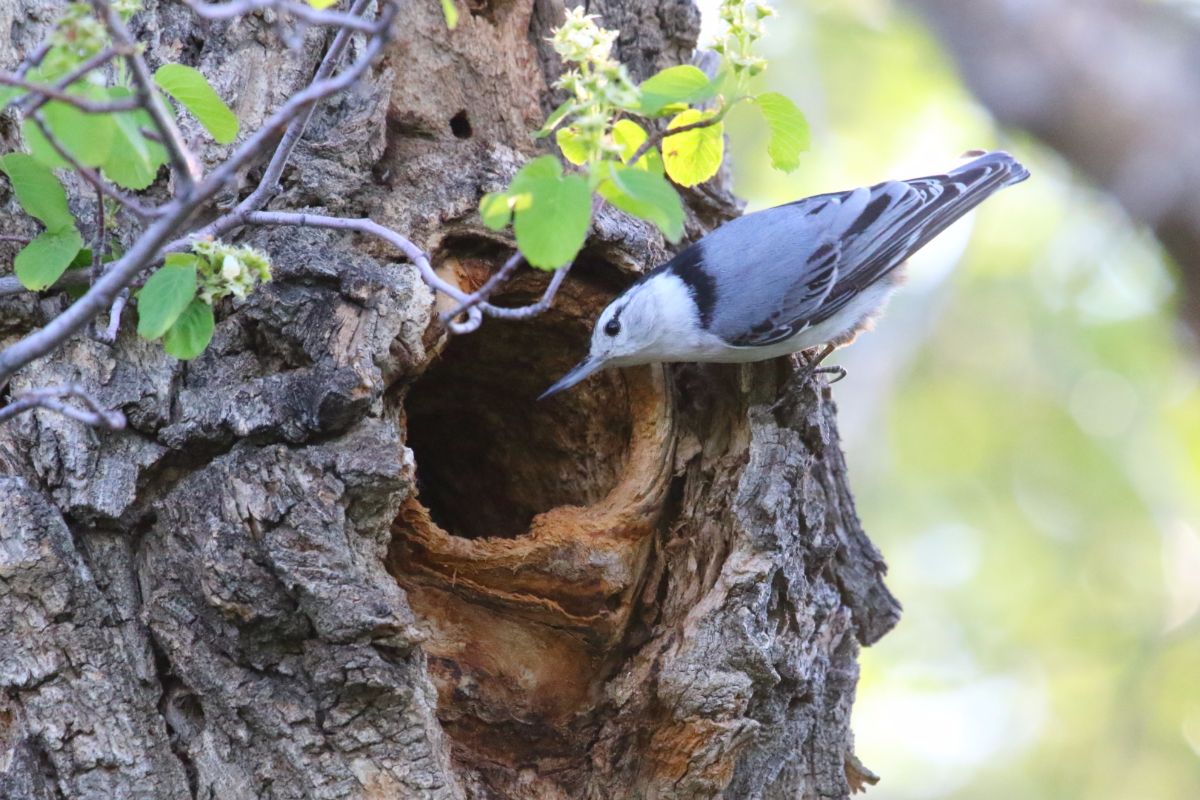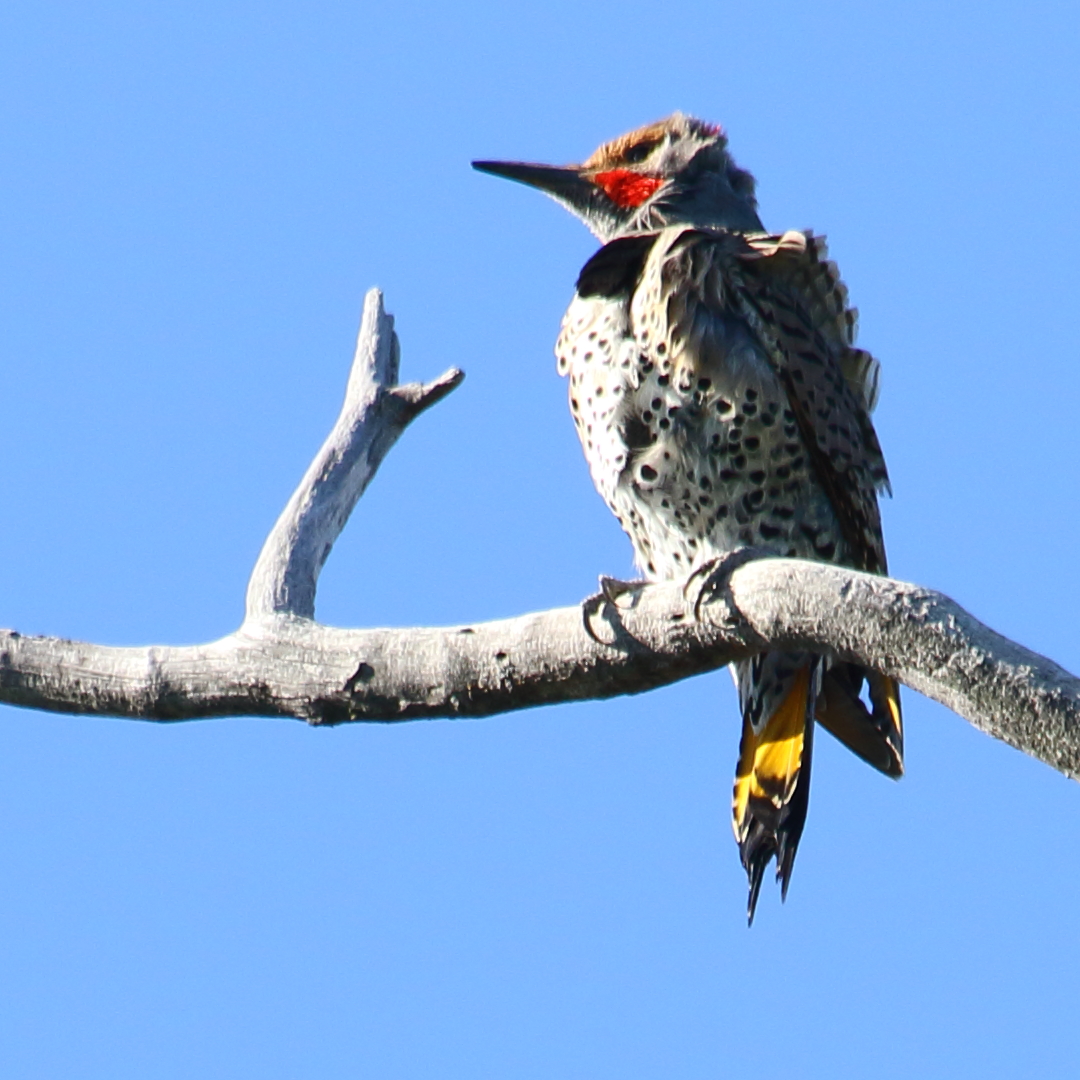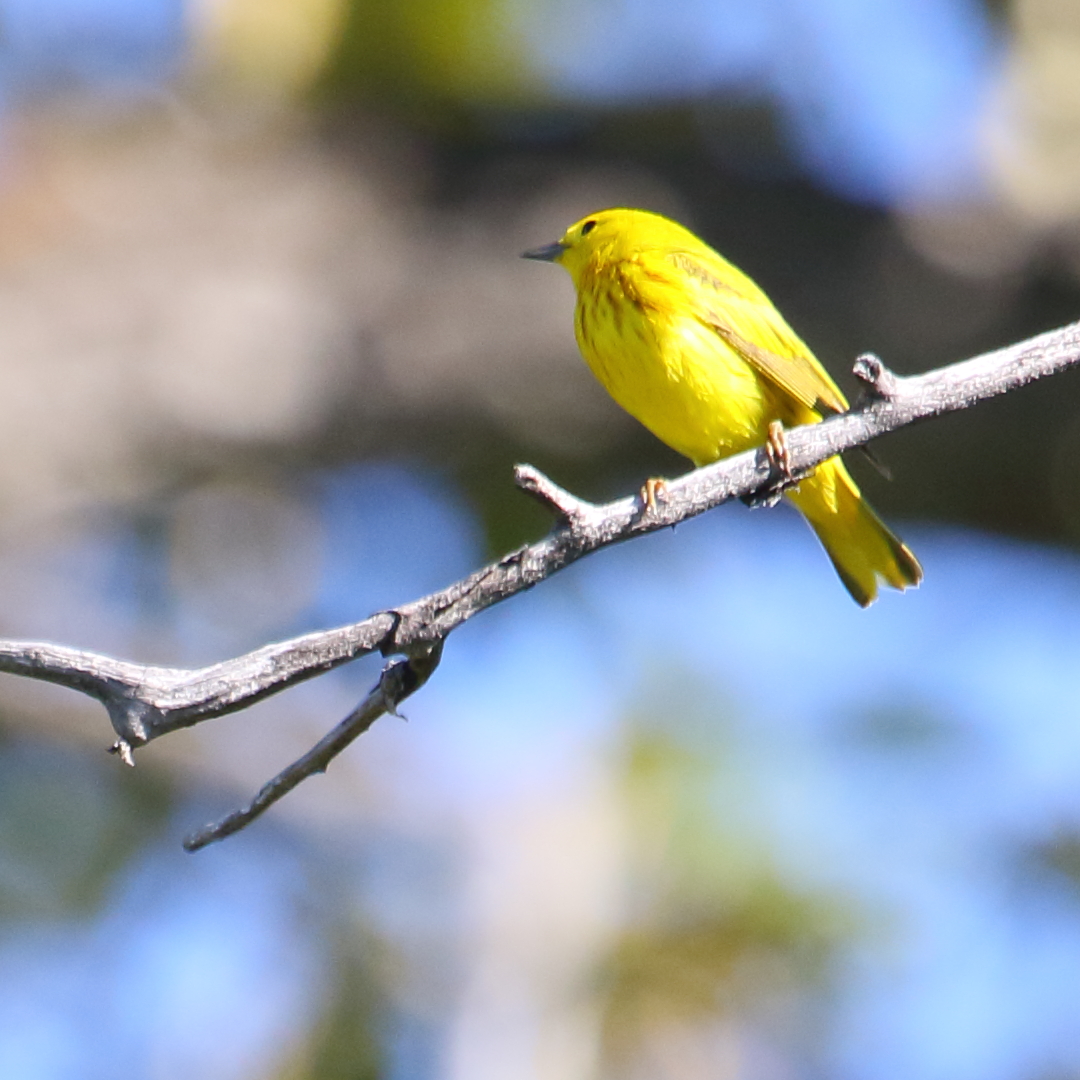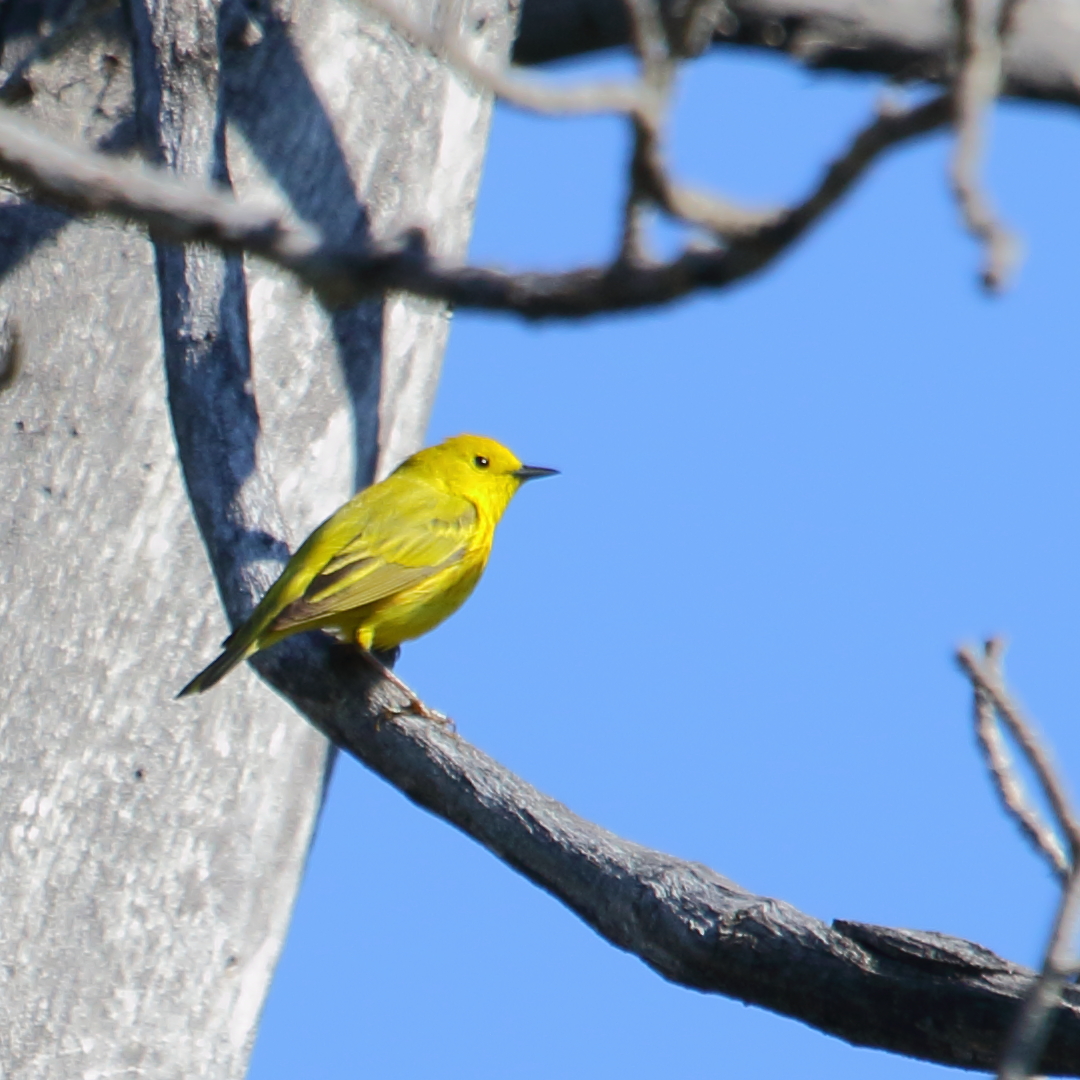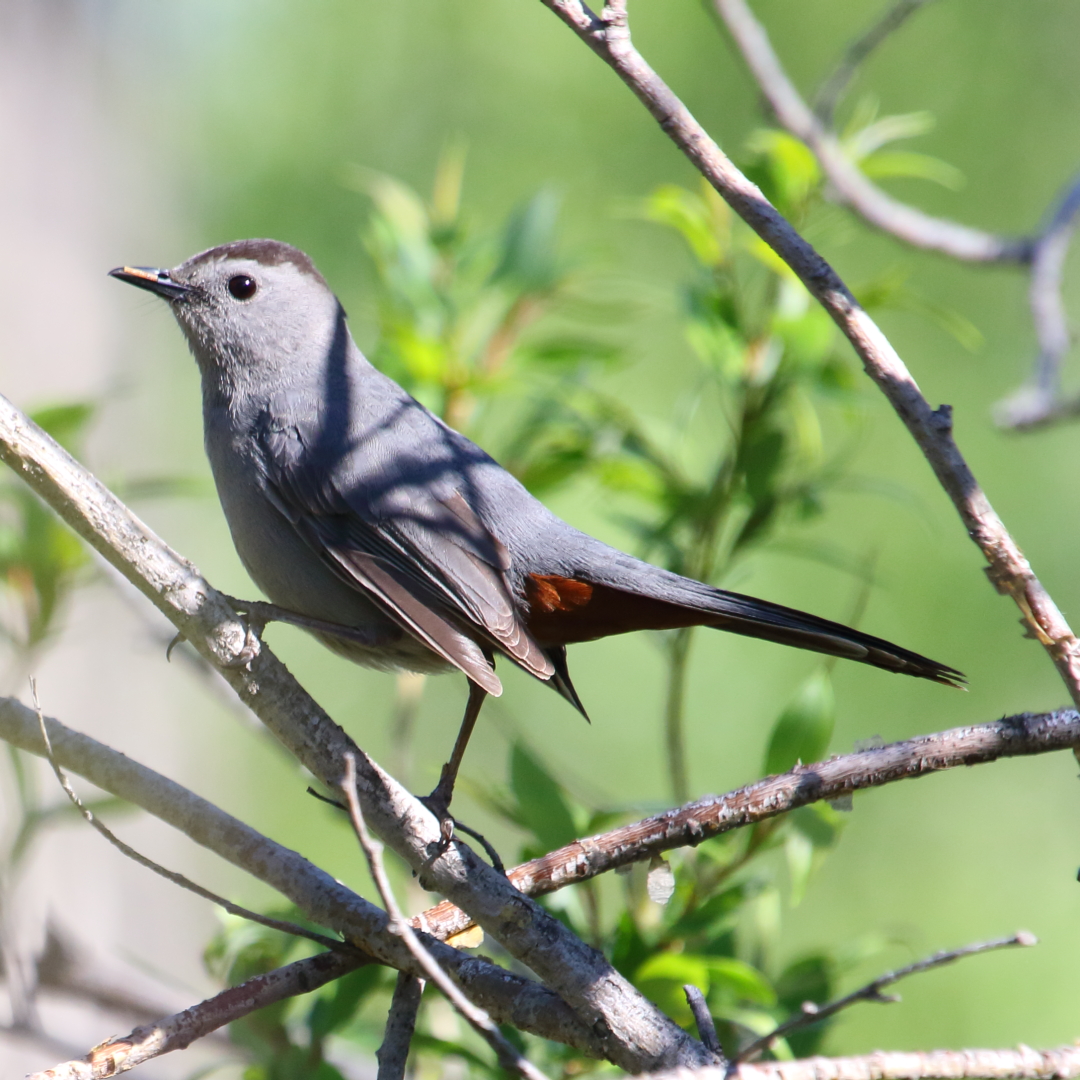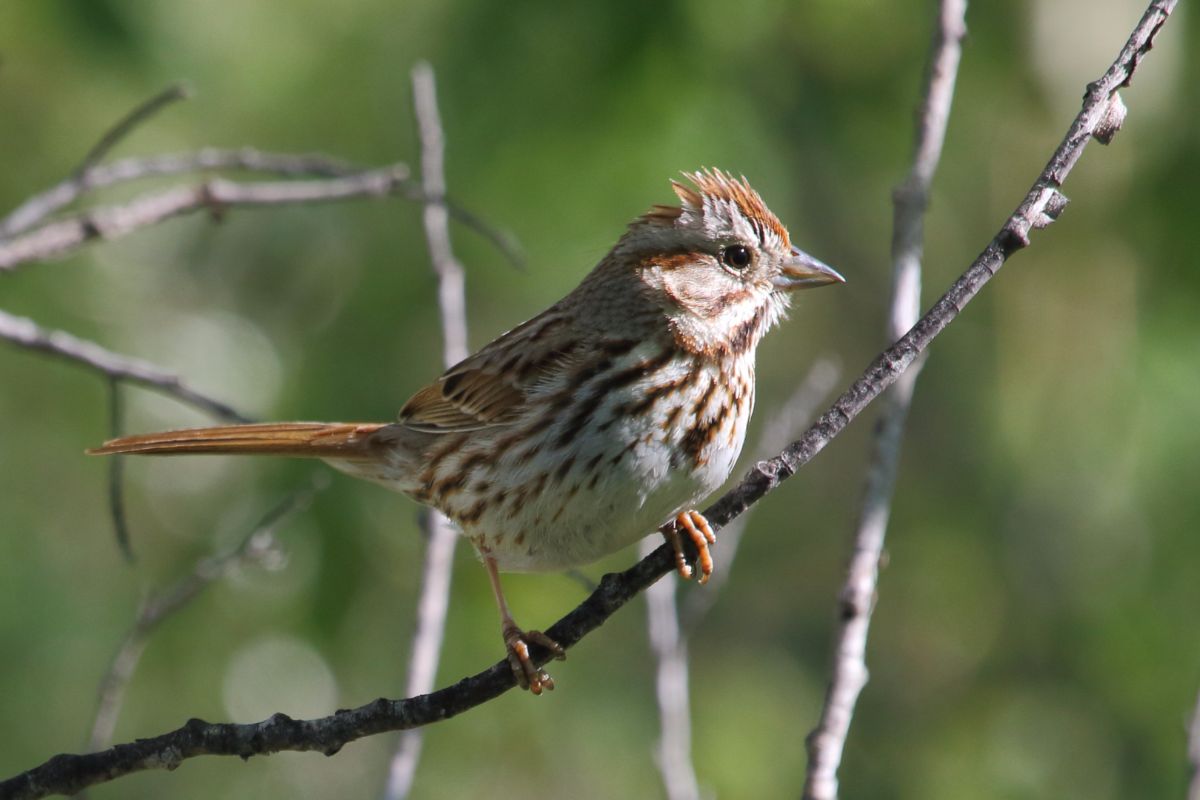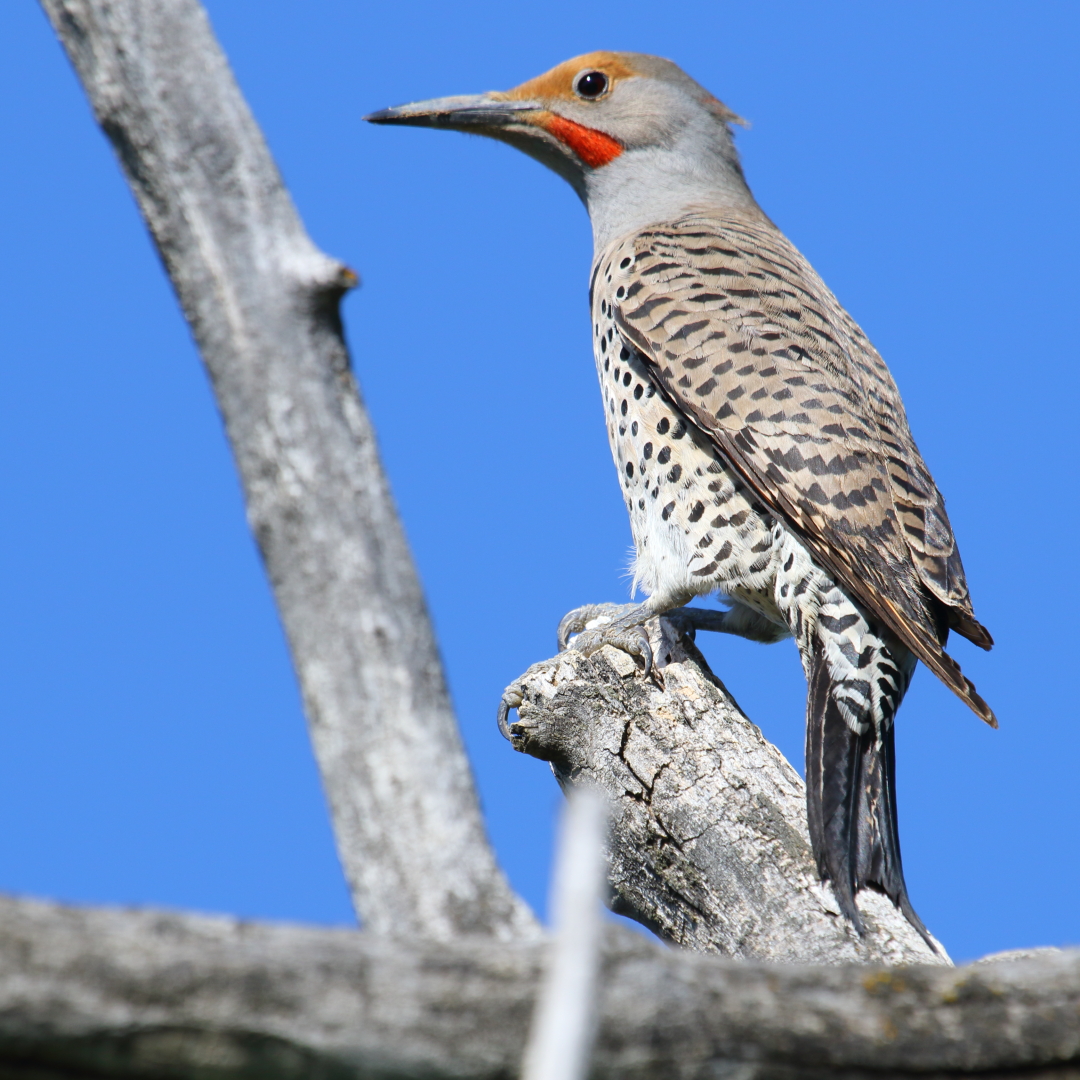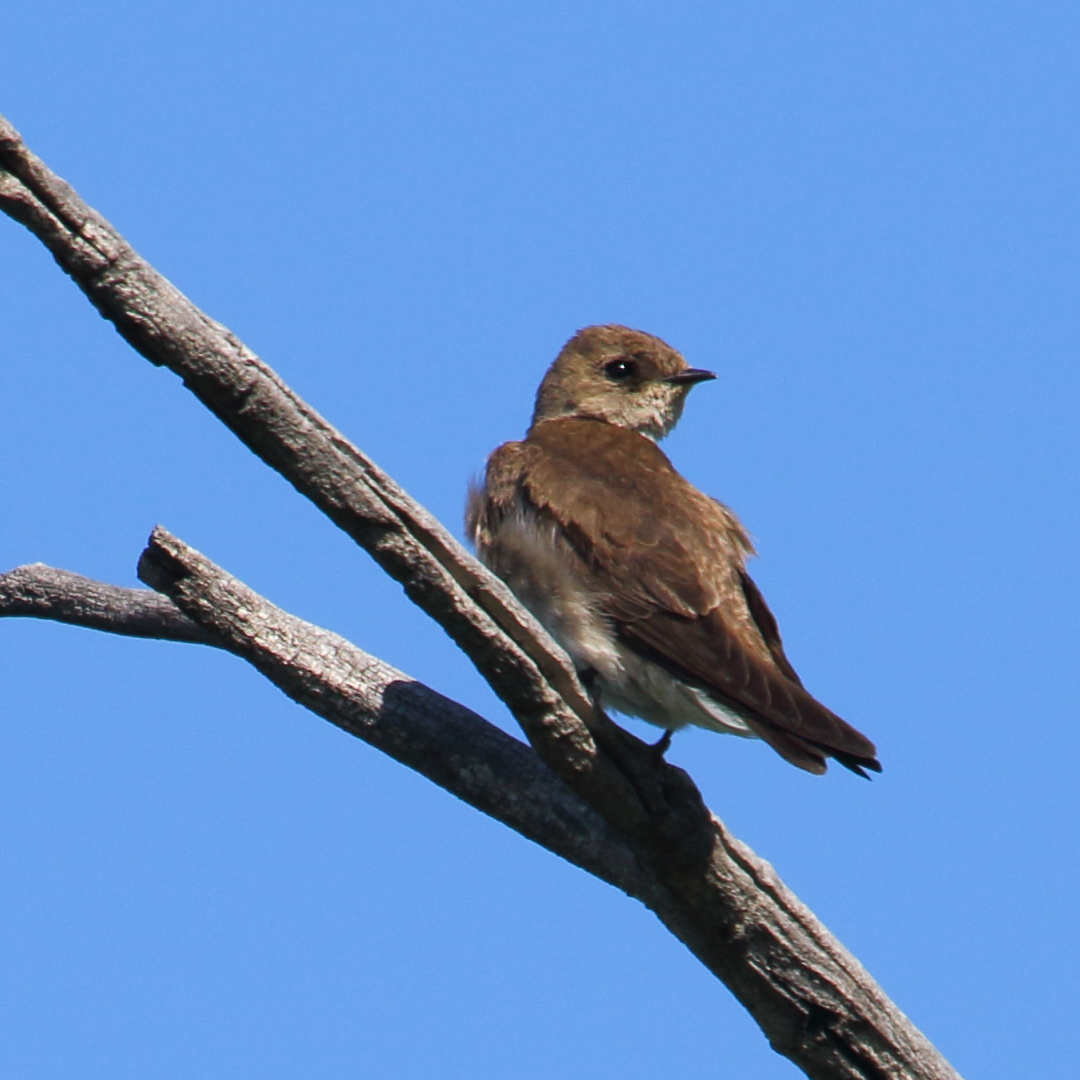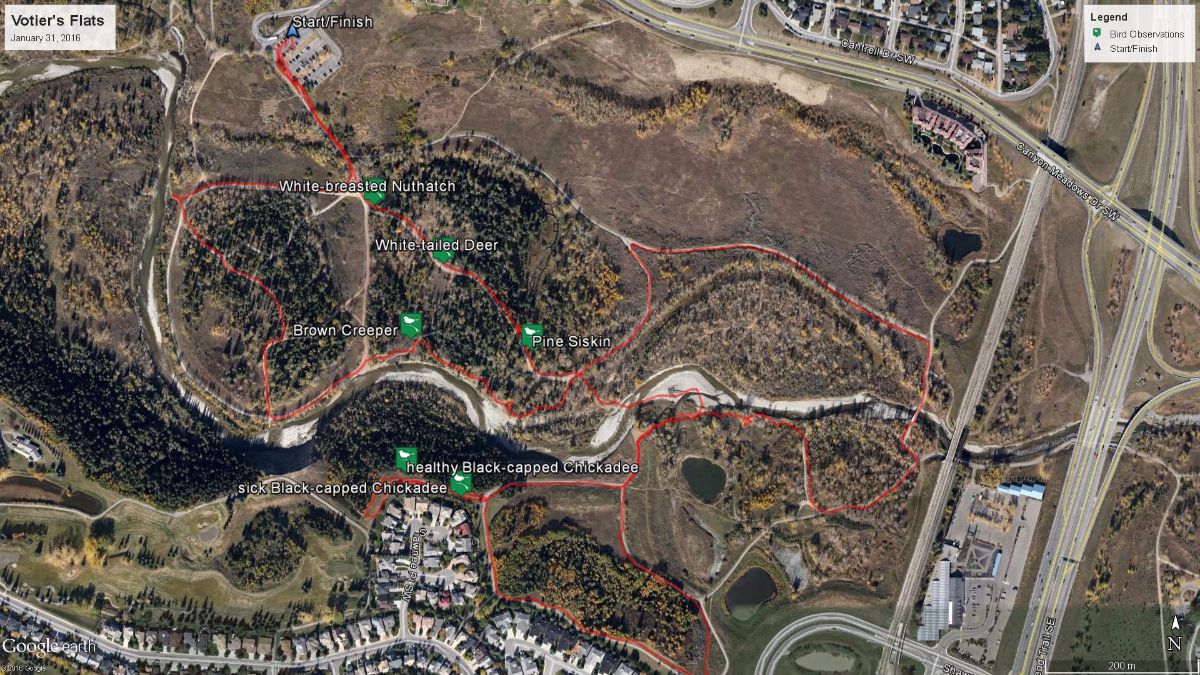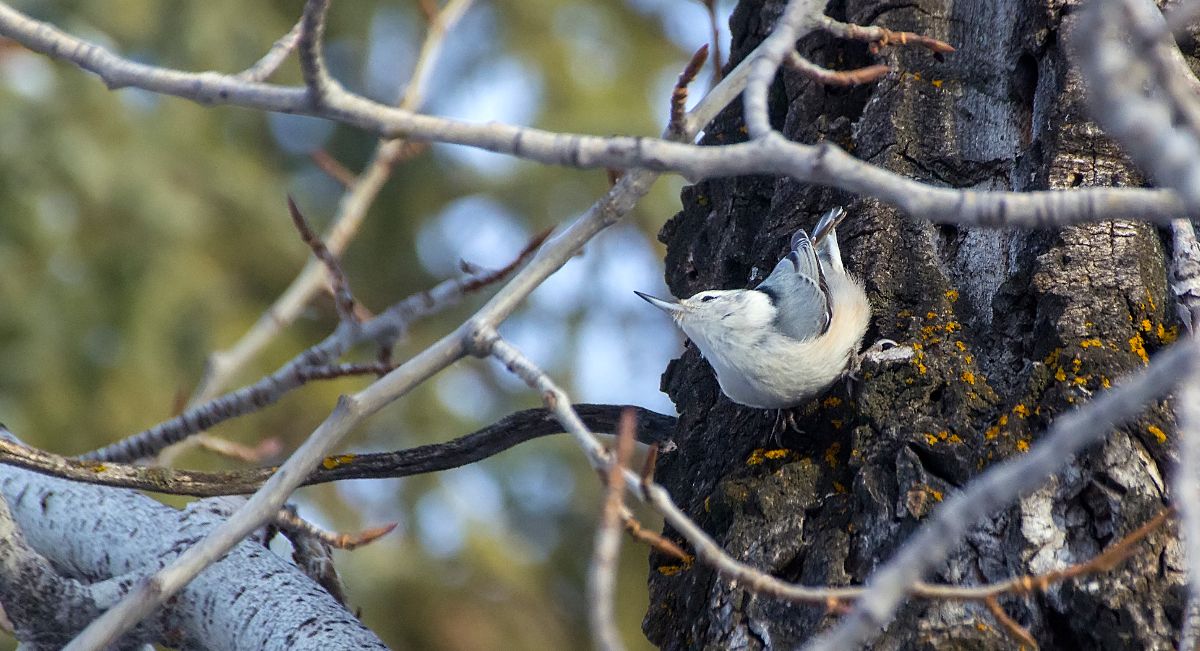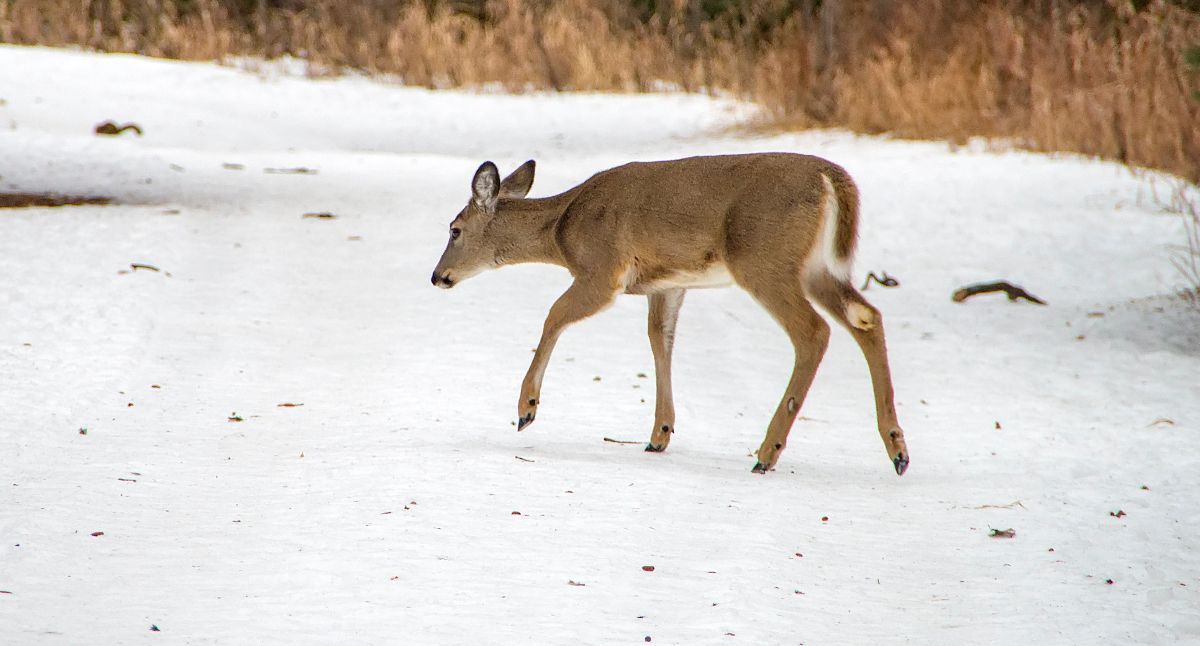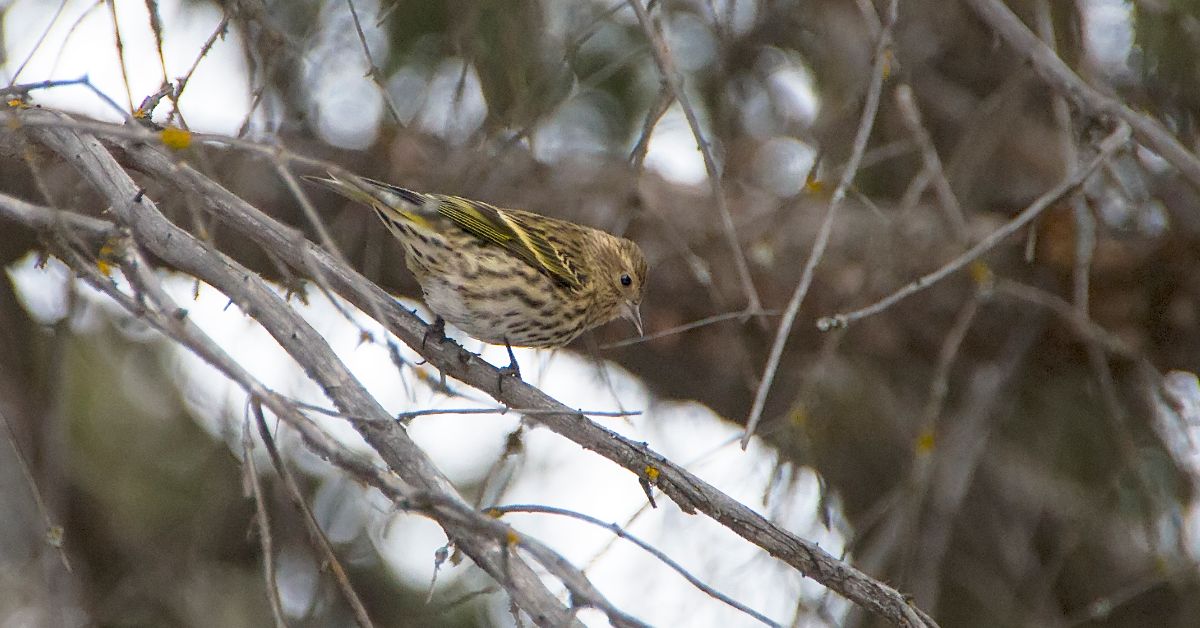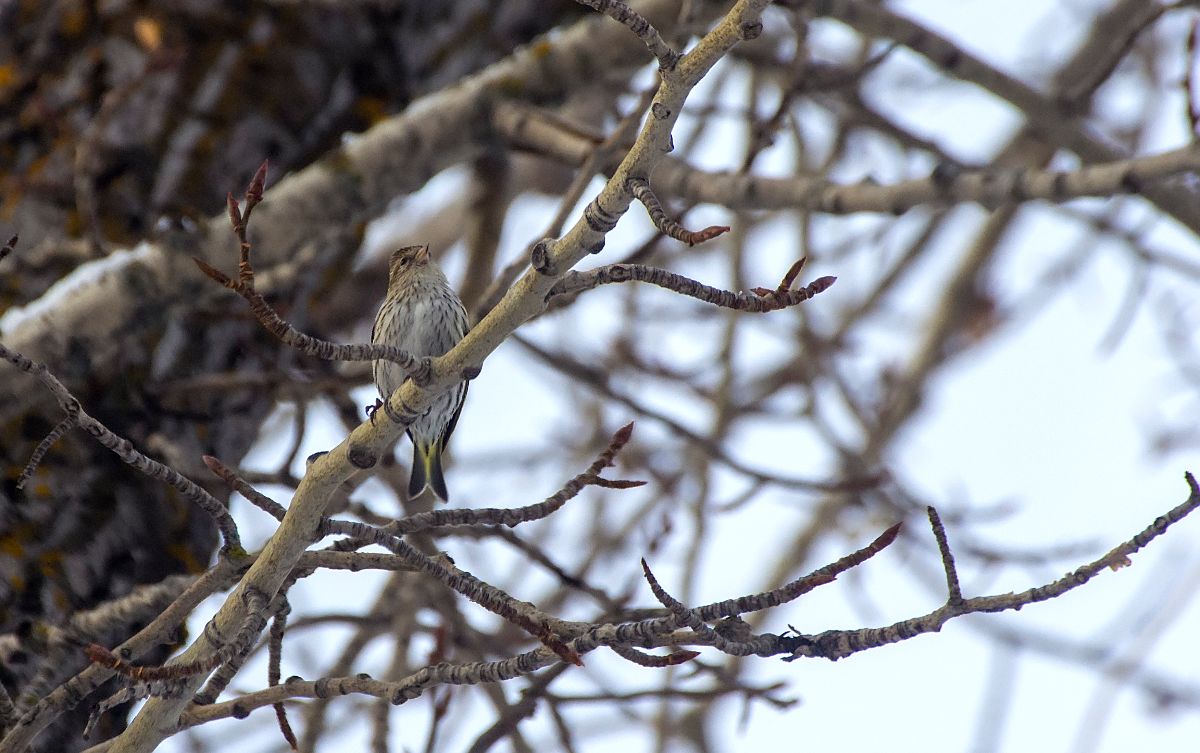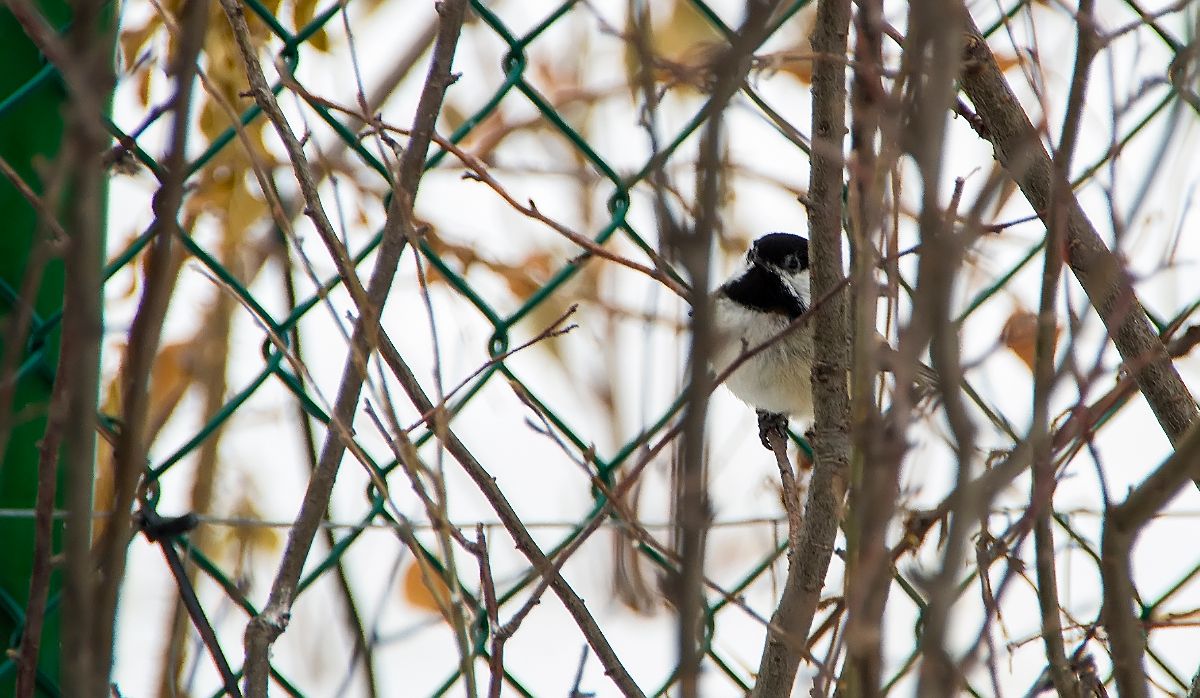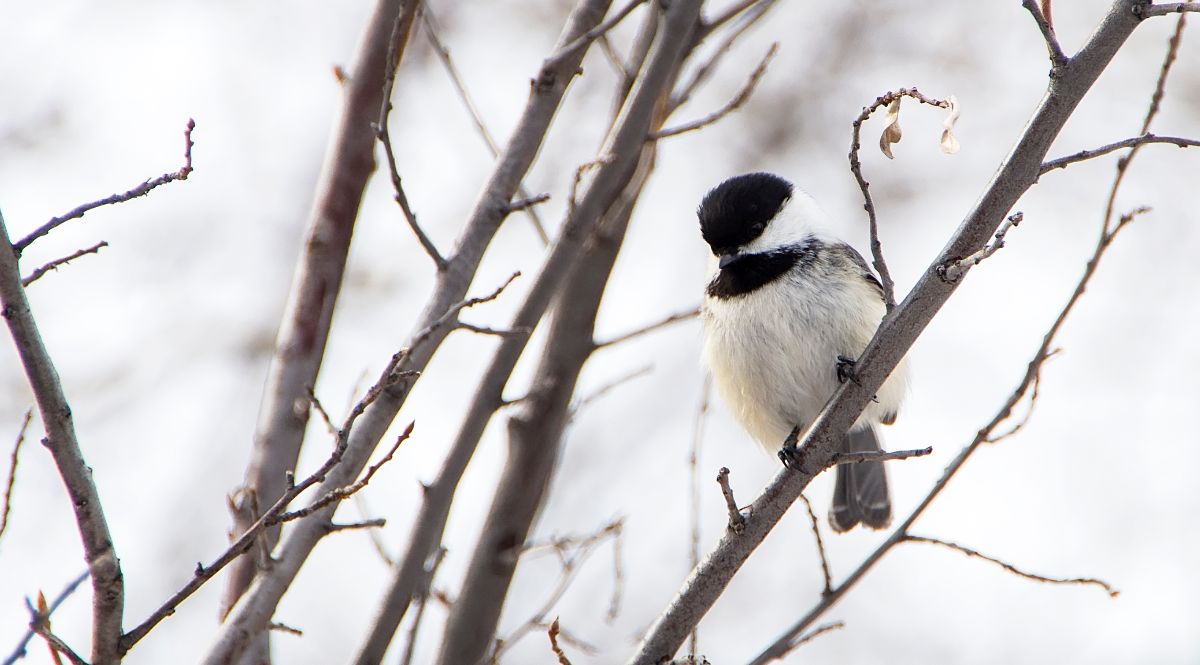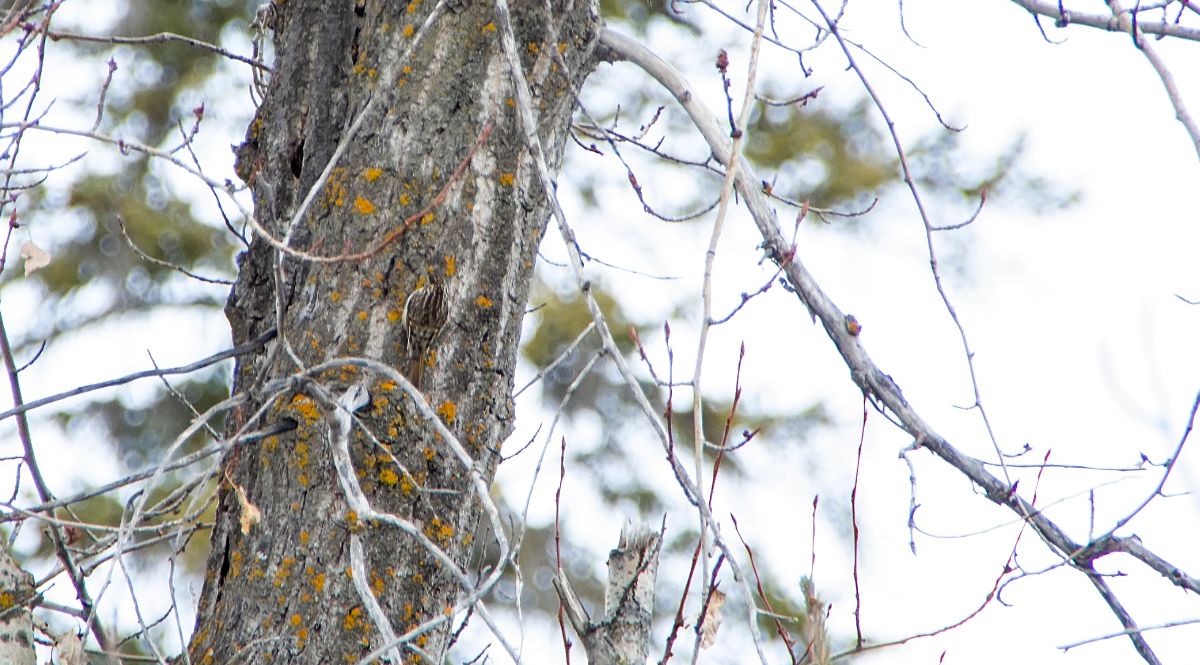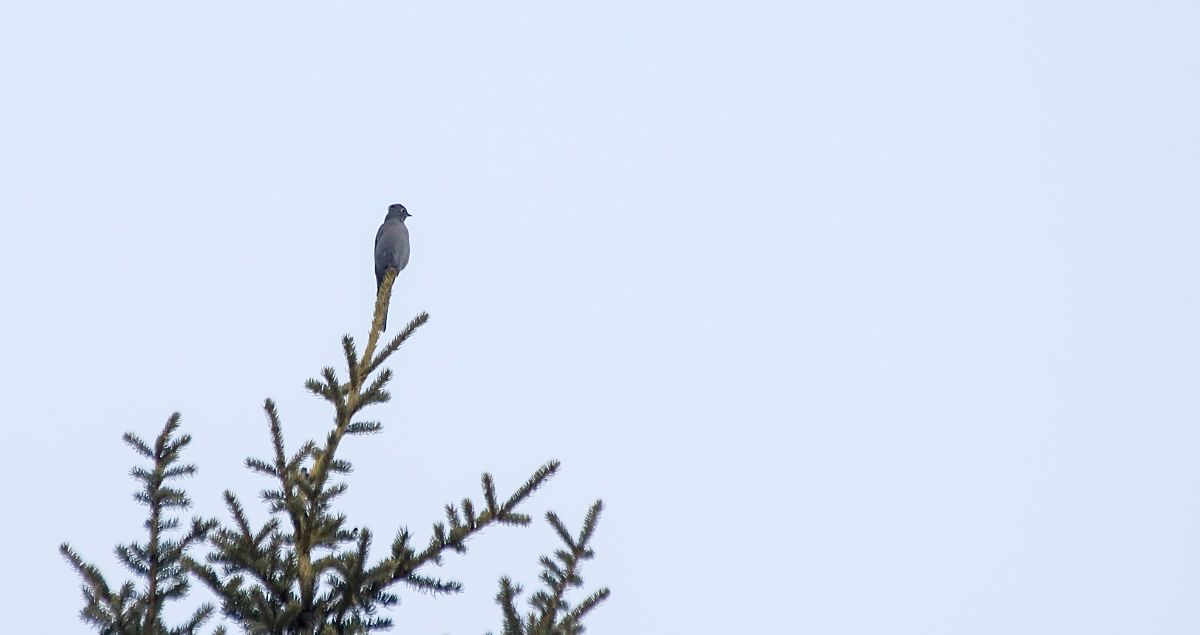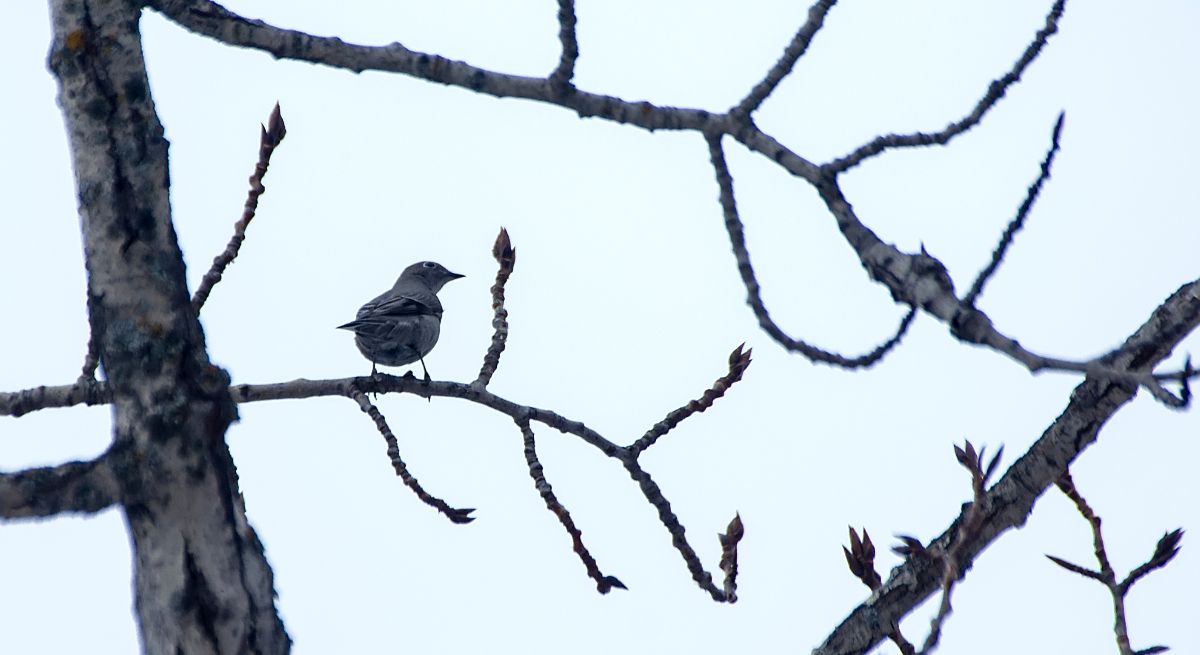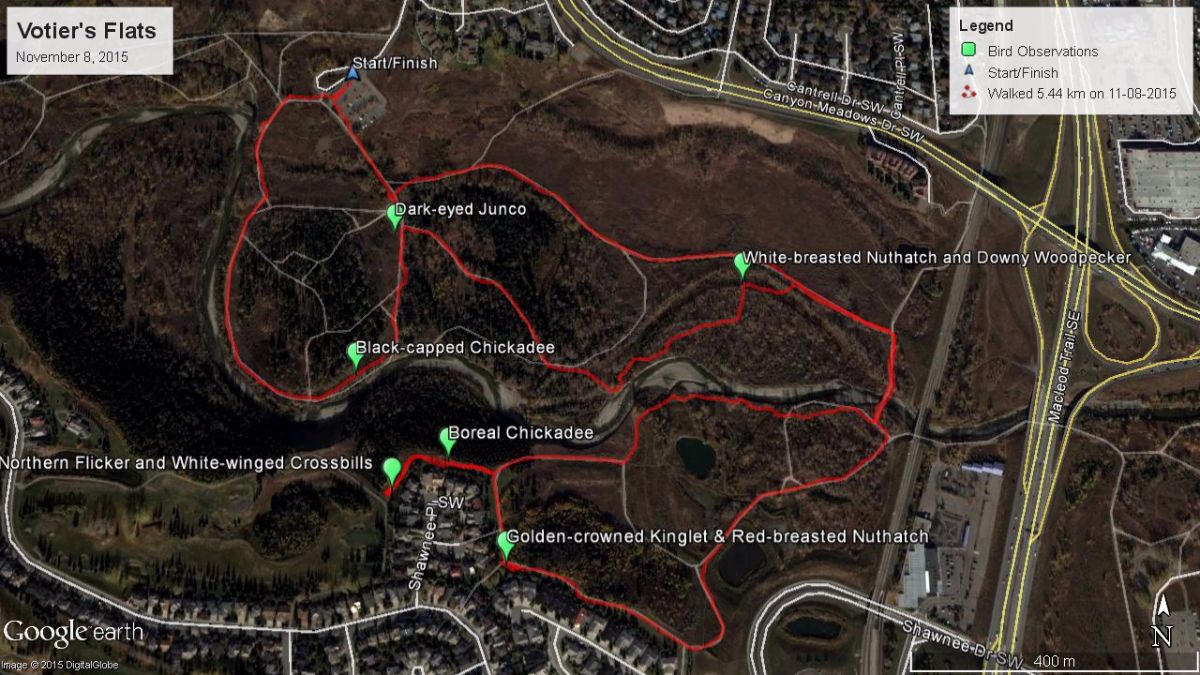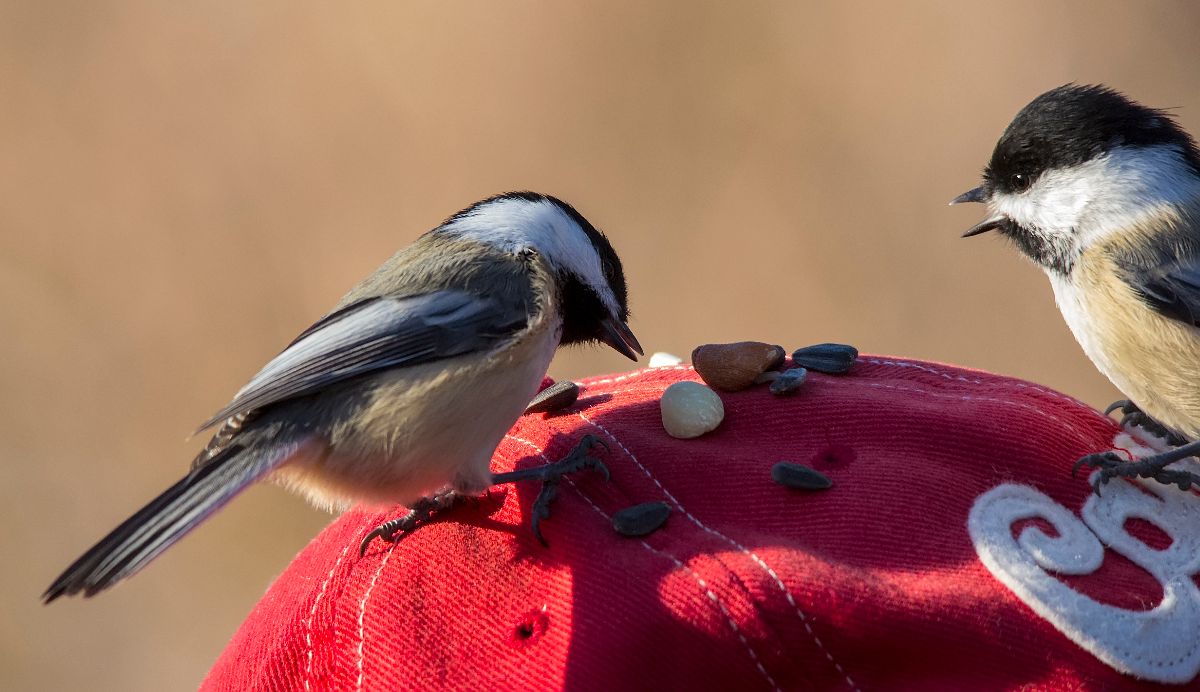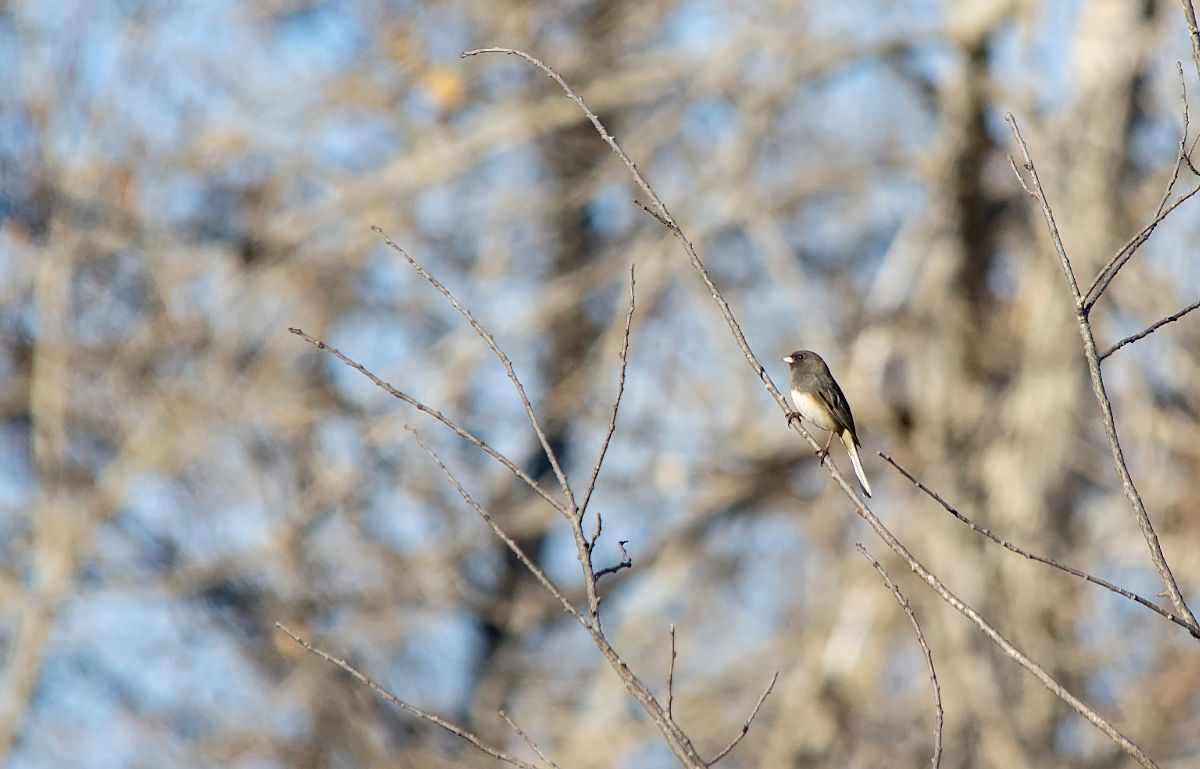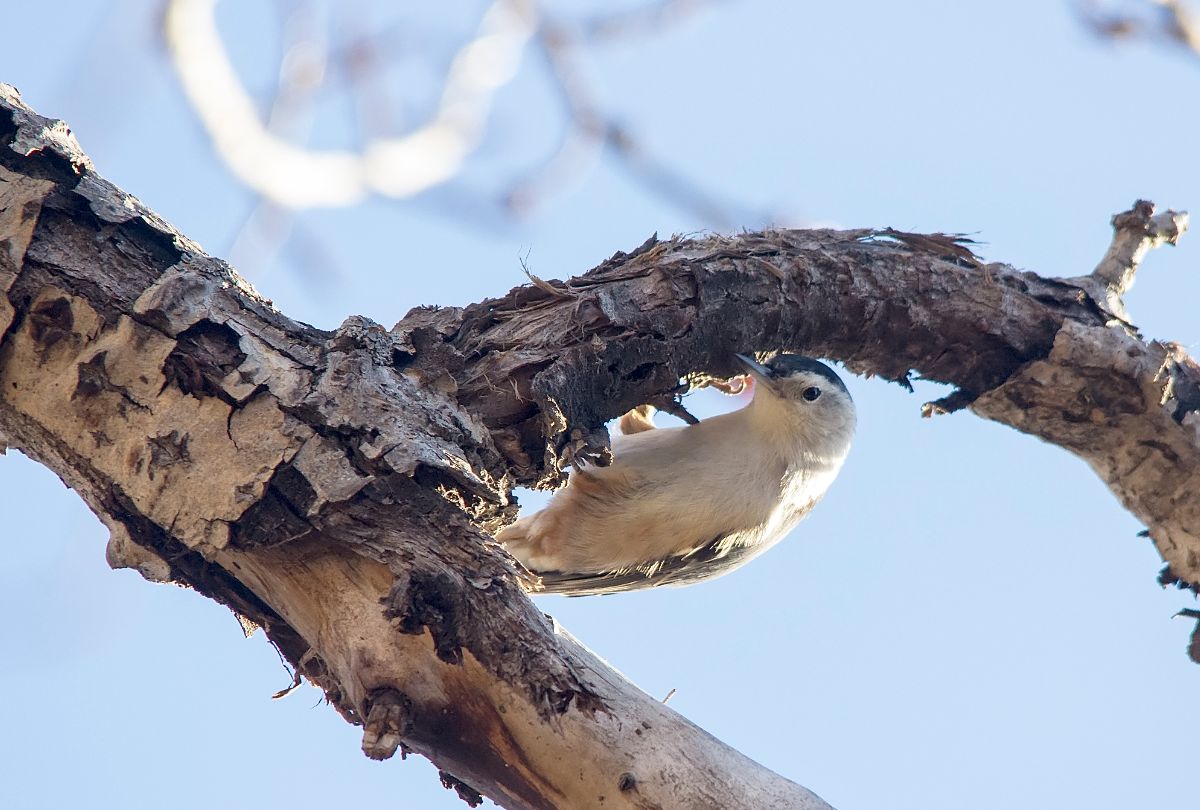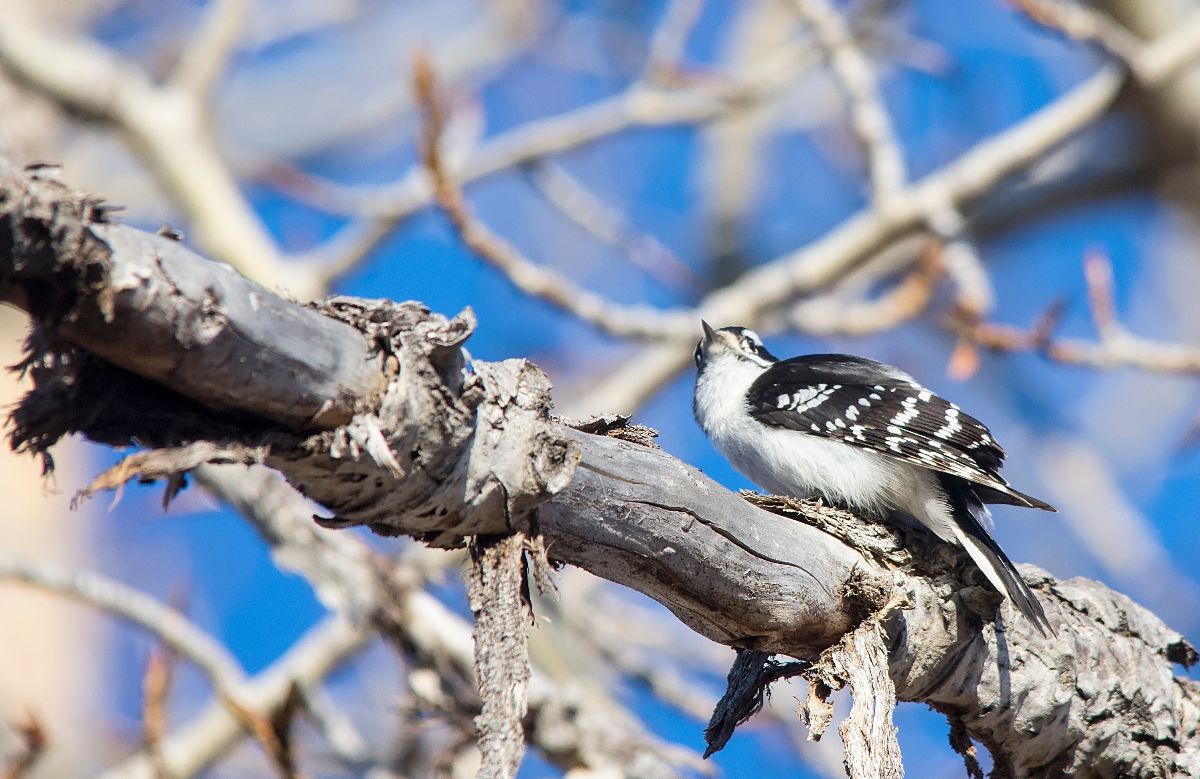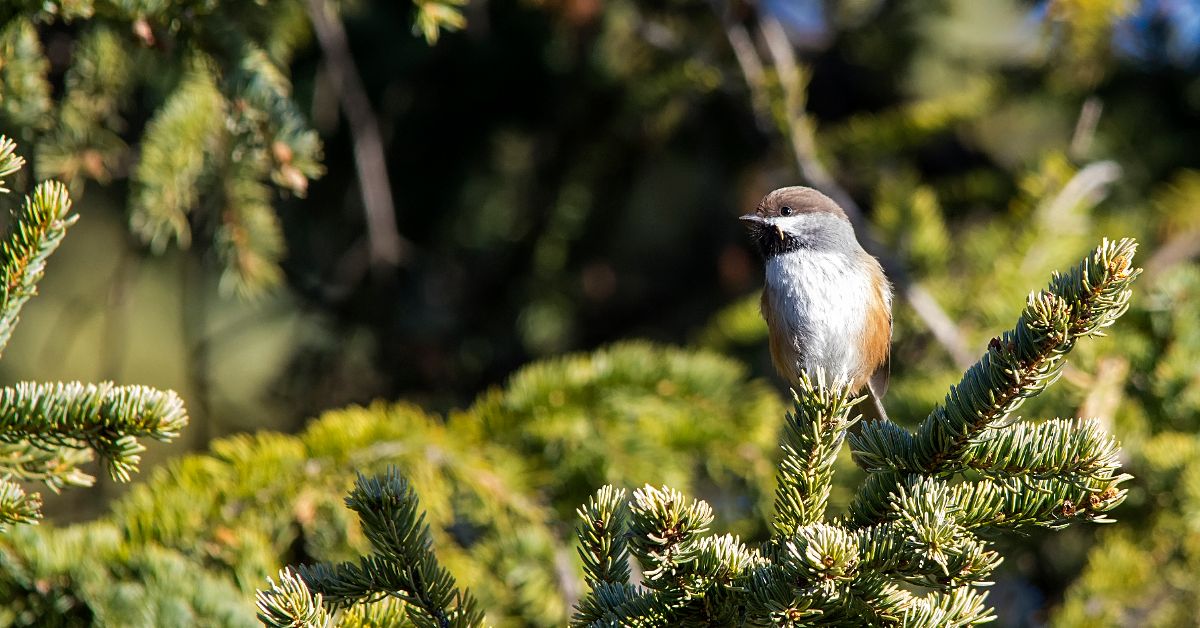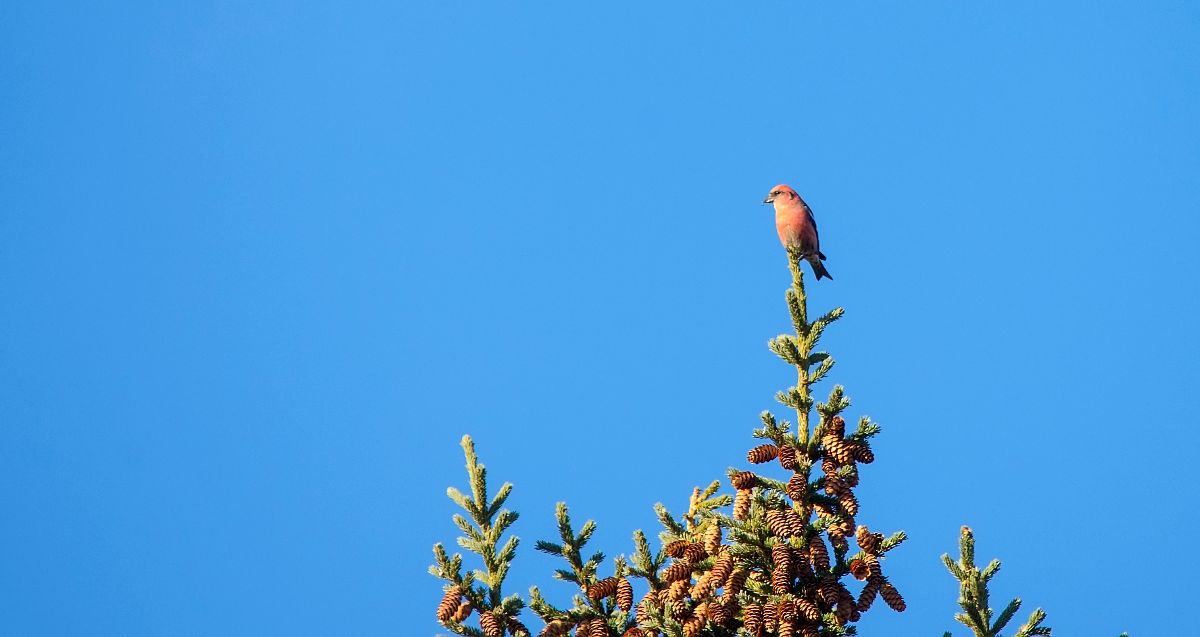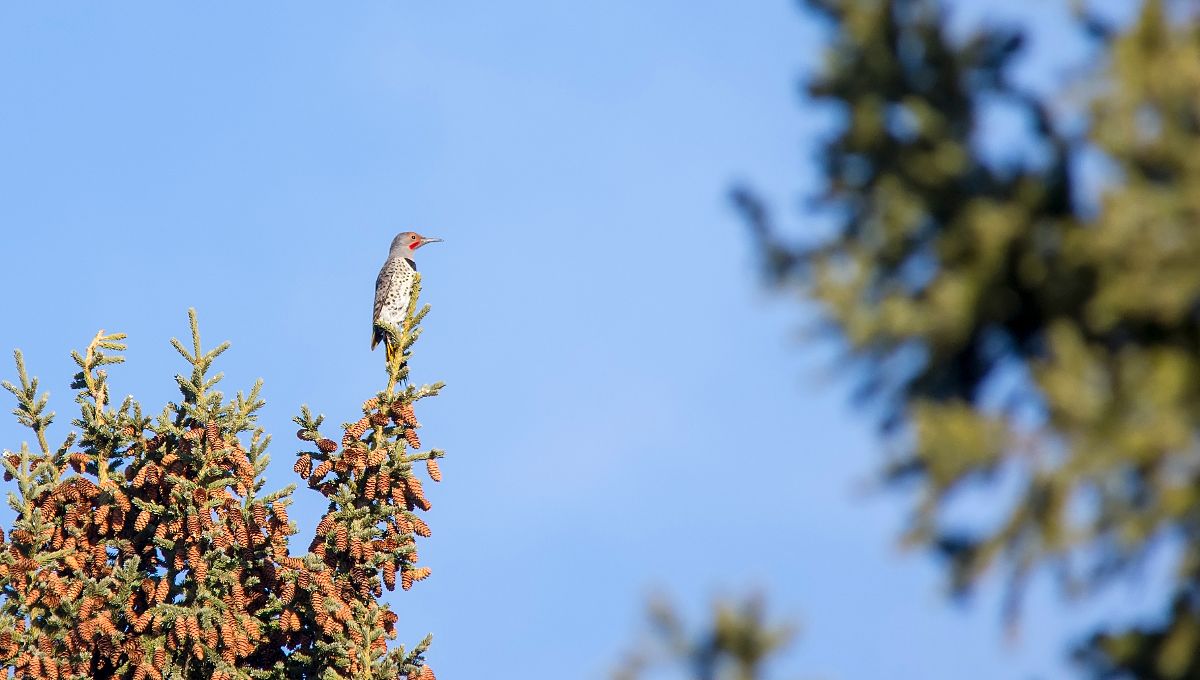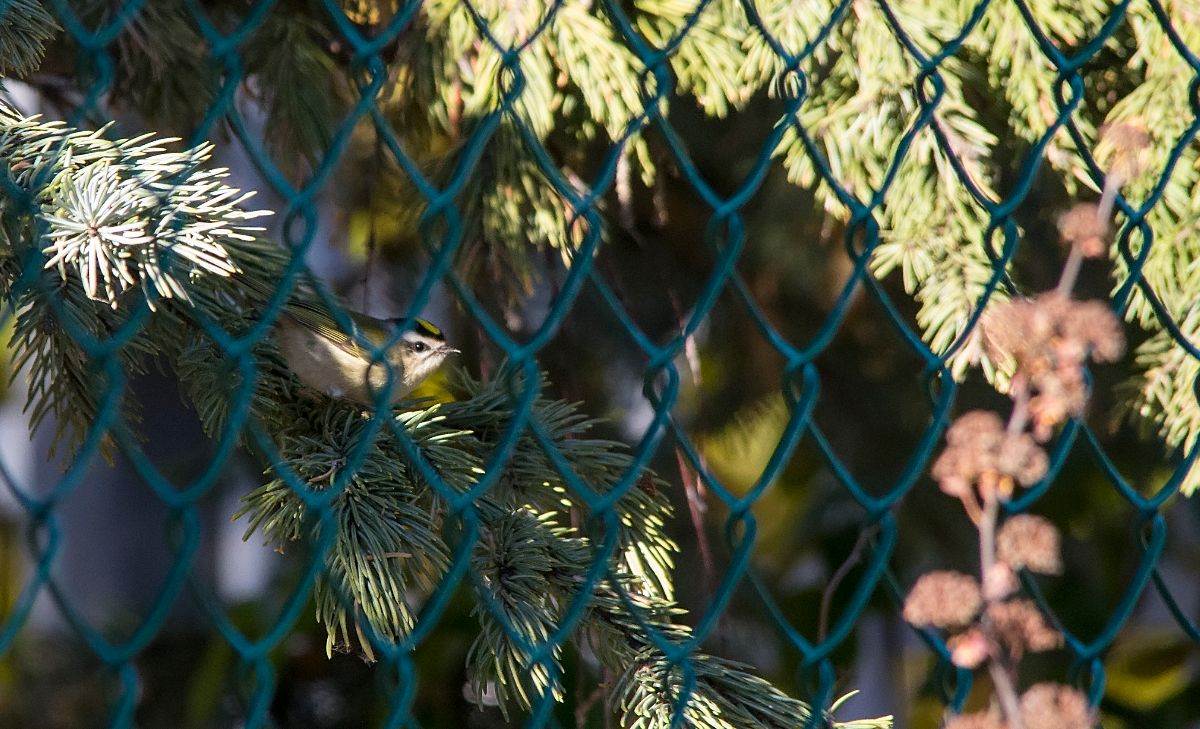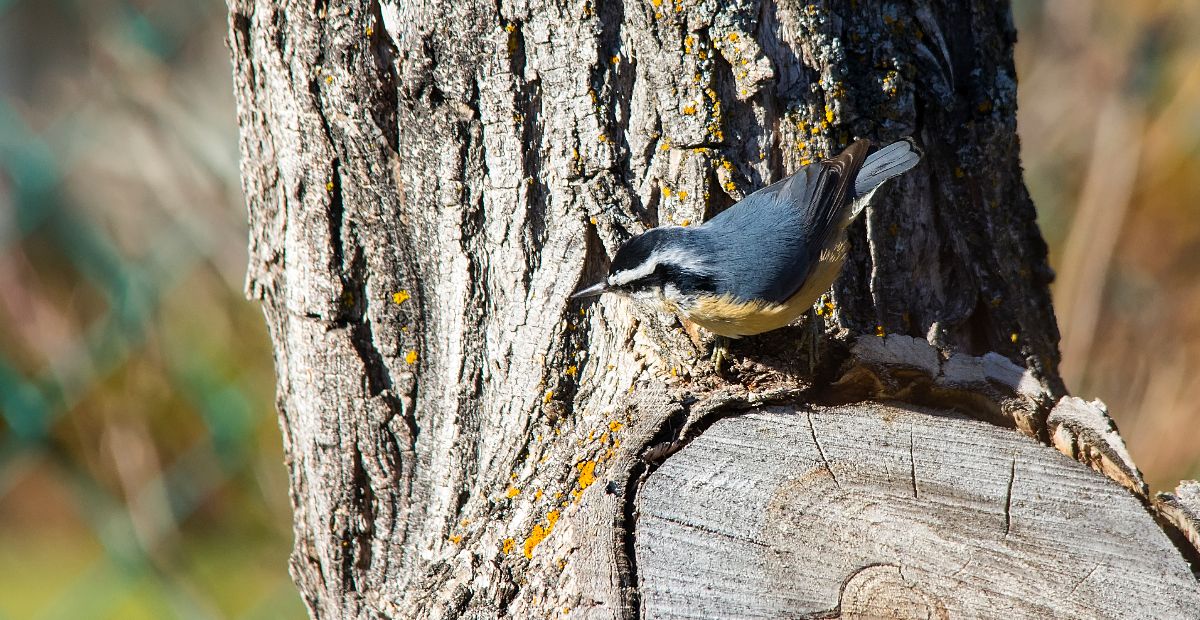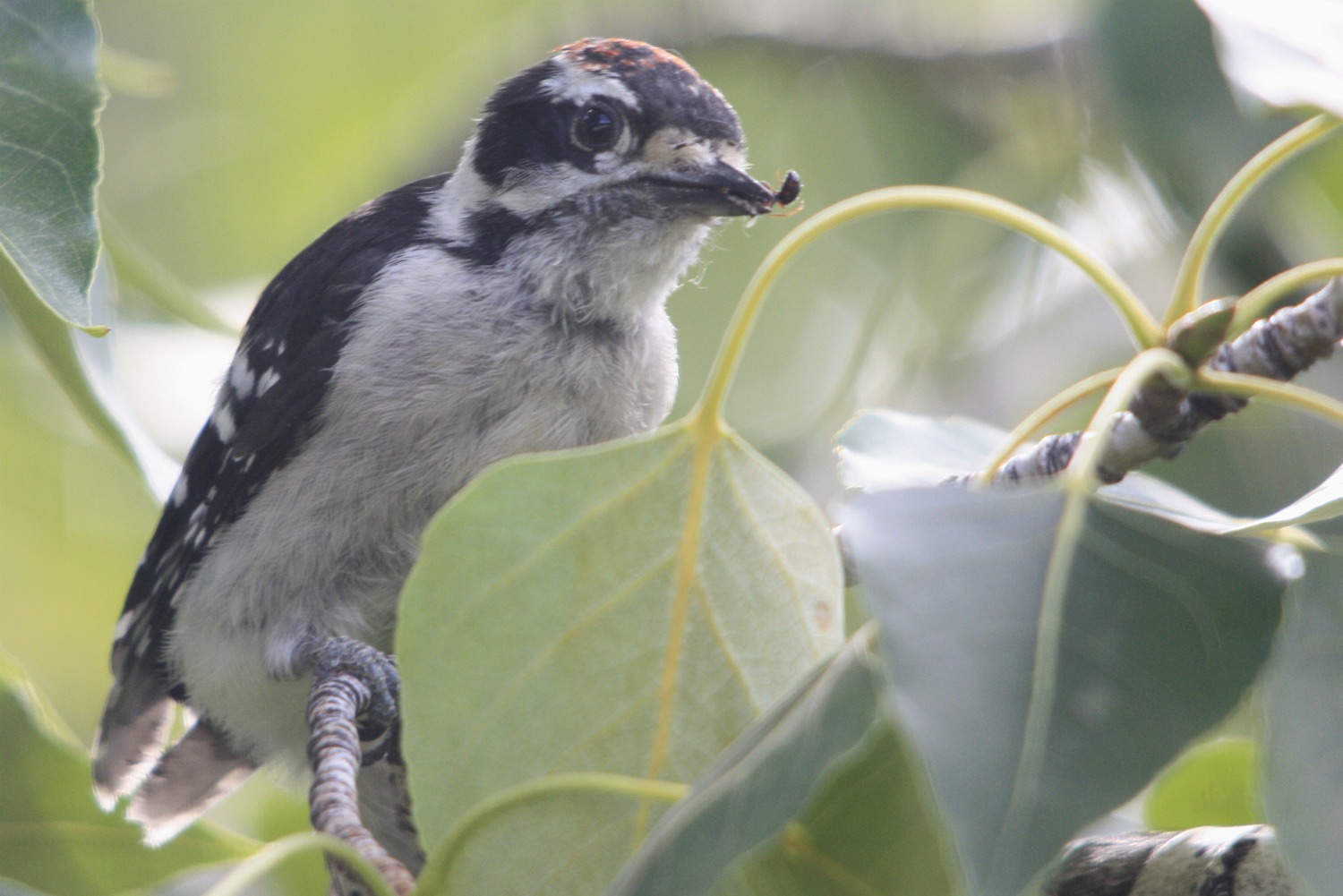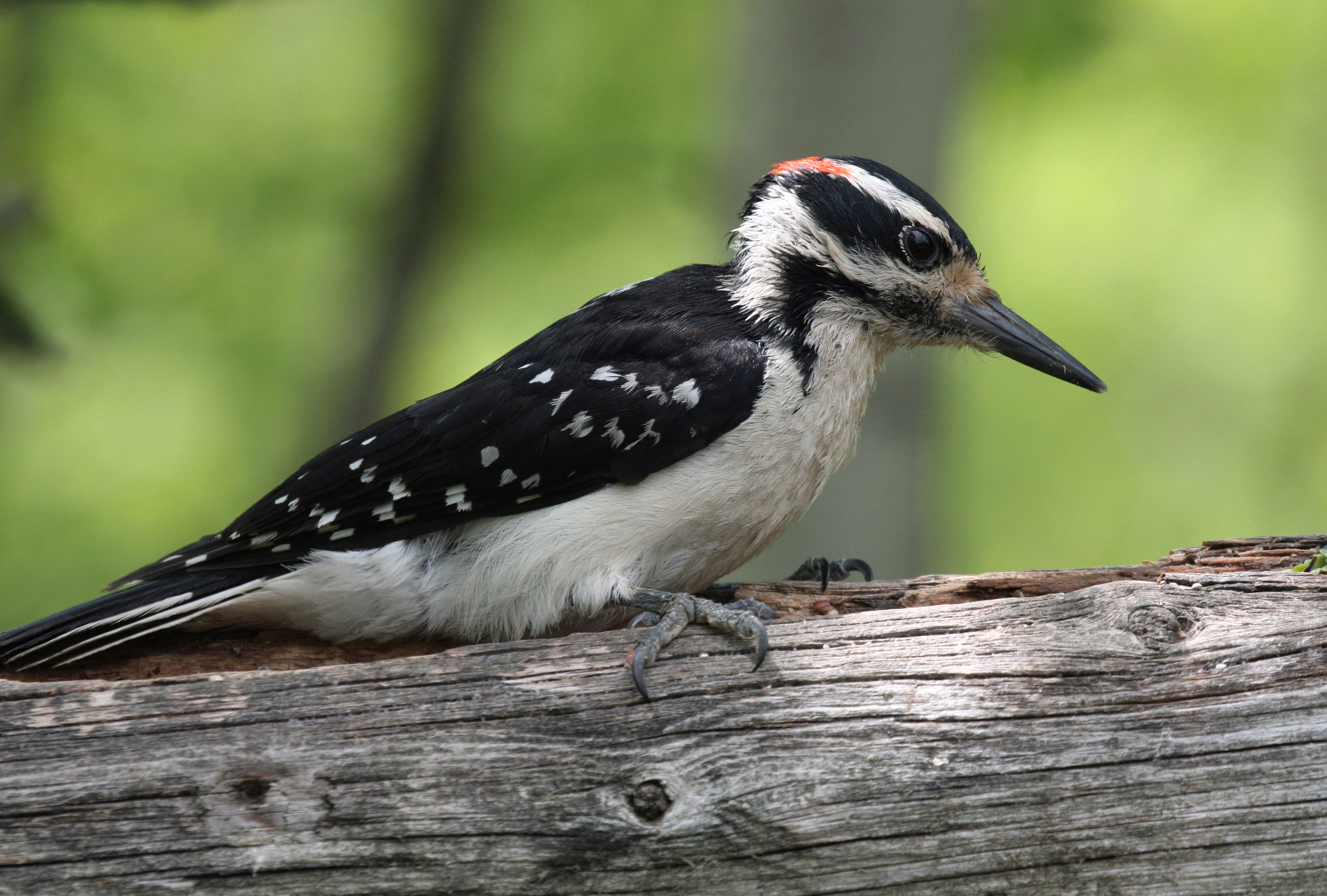Posted by Dan Arndt
Following our great excursion to Pearce Estate Park, we headed down to the Weaselhead as our first real cold snap started to descend upon Calgary. We did get a bit of a break in the weather by Sunday, and there were a good number of birds out enjoying the sunny day!
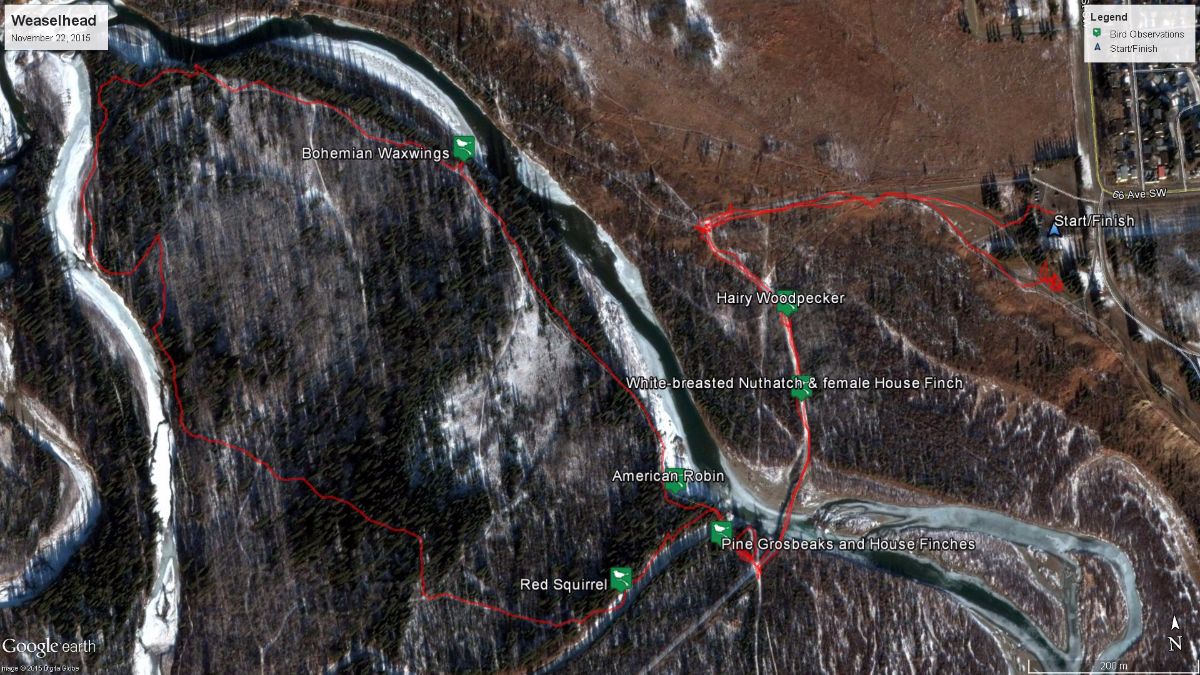
Weaselhead – November 22, 2015
The Weaselhead has always been a good location to find the many winter finches that come south from the boreal forest to gorge themselves on the spruce and willow seeds in years when the cone crop up north is in a low cycle, and the crop here is at a peak. In non-finch years, we still will get the usual winter birds, including four species of woodpecker, both Red- and White-breasted Nuthatches, and Black-capped and Boreal Chickadees as great stand-bys.
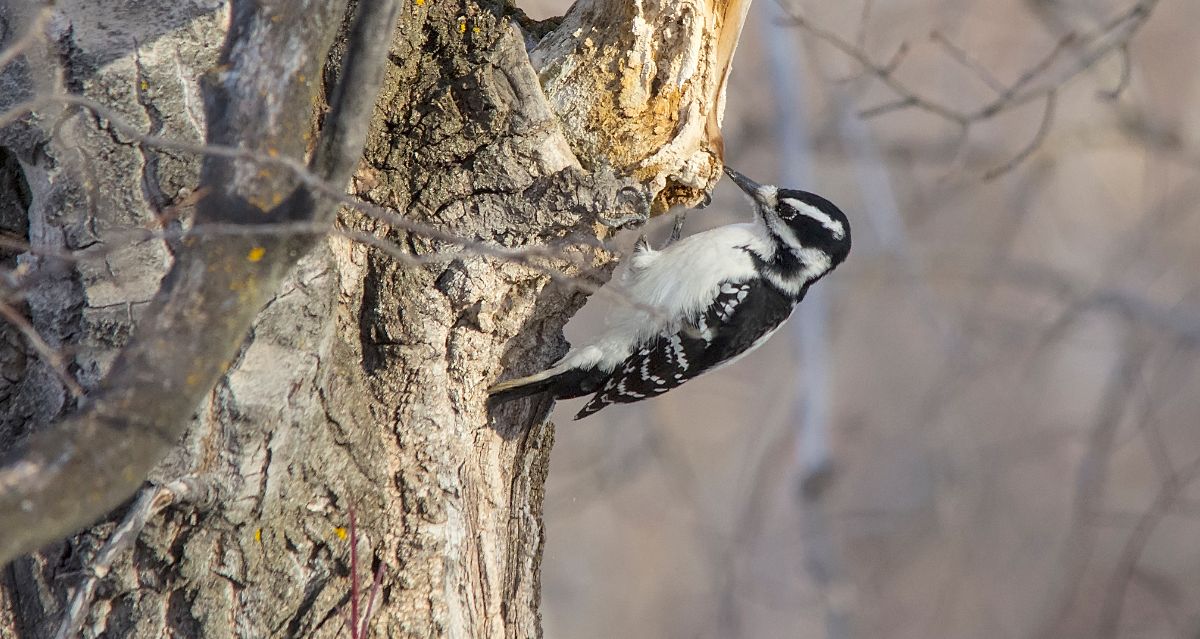
female Hairy Woodpecker
[exif id=”15054″]
The older trees down in the Weaselhead are great places for the woodpeckers to forage, as they have plenty of nooks and crannies for insects to huddle up for the winter, and plenty of holes and crevices for the birds to spend their cold winter nights out of the elements as well. It’s a great give and take relationship that many of these birds have with their environment.
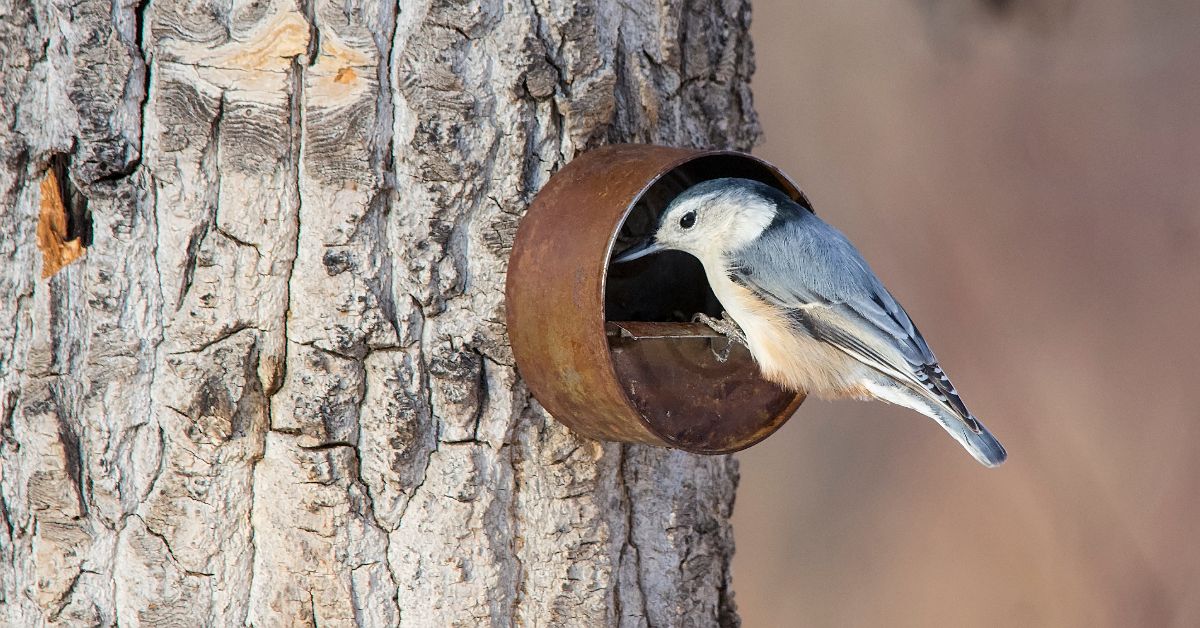
White-breasted Nuthatch
[exif id=”15055″]
The other side of the coin is that for years, there have been many different individuals who have put up feeders on many of the trees along the main pathway, which have become hotspots for finding the expected winter species, but the occasional overwintering rarity as well, such as American Goldfinches and White-throated Sparrows.
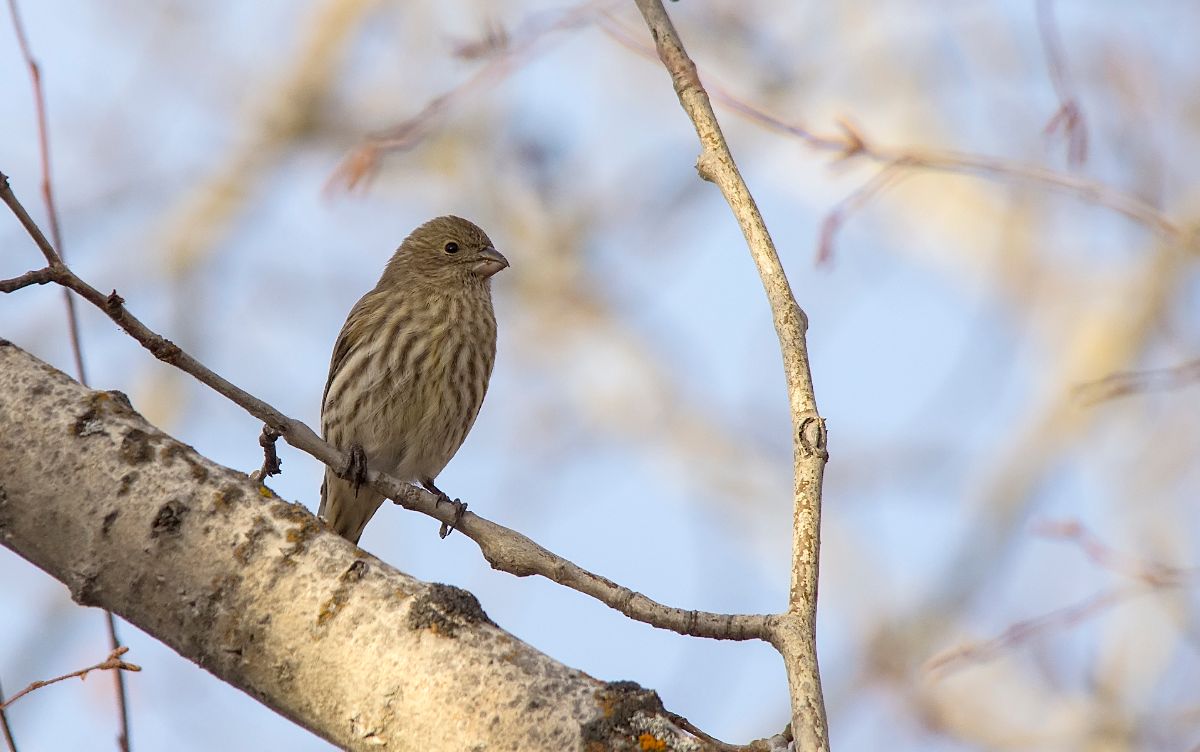
female House Finch
[exif id=”15053″]
While checking out the feeders, this female House Finch flew up and allowed all of us good views of her, which should have been a hint at what we were in for later on in the day! I rarely get good looks at House Finches, either males or females, as they always seem to be actively foraging, flying, or singing high up in the trees with lots of branches in the way.
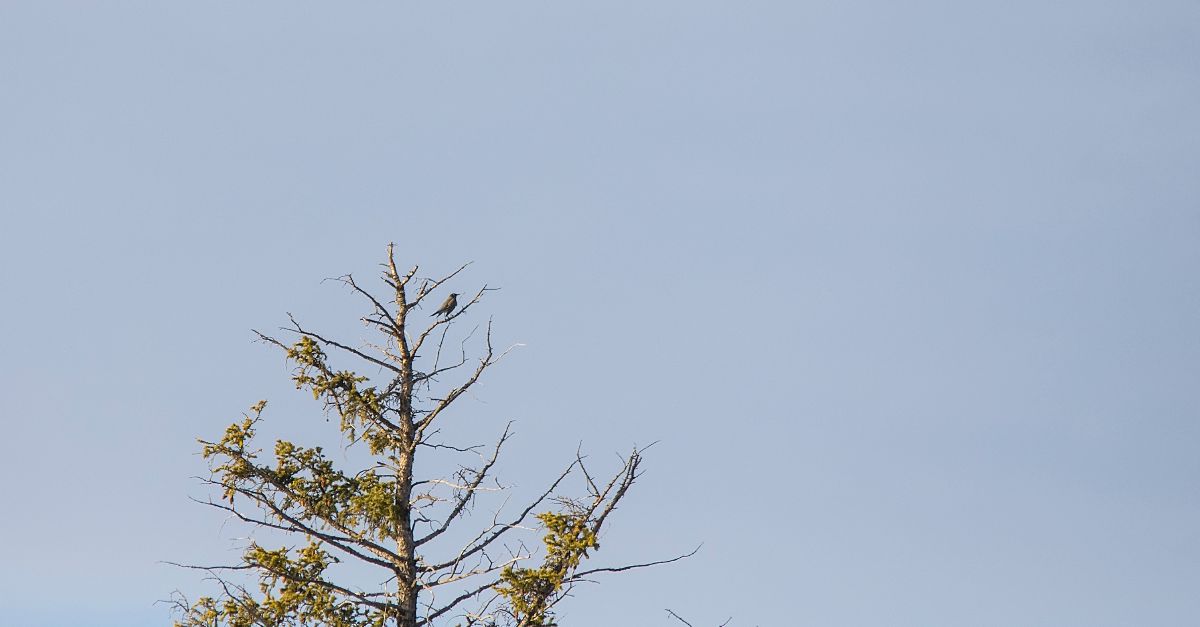
American Robin
[exif id=”15052″]
The warm weather had also allowed for some larger flocks of some of the American Robins that choose to spend the winter here in Calgary. We had fifteen (yes, 15!) of these typical “spring” birds here that day, but that’s not unusual at all. During the Christmas Bird Count each year, we usually record double digits of American Robins throughout the city, usually in some of the warmer microclimates around small creeks, springs, and outflows around the city.
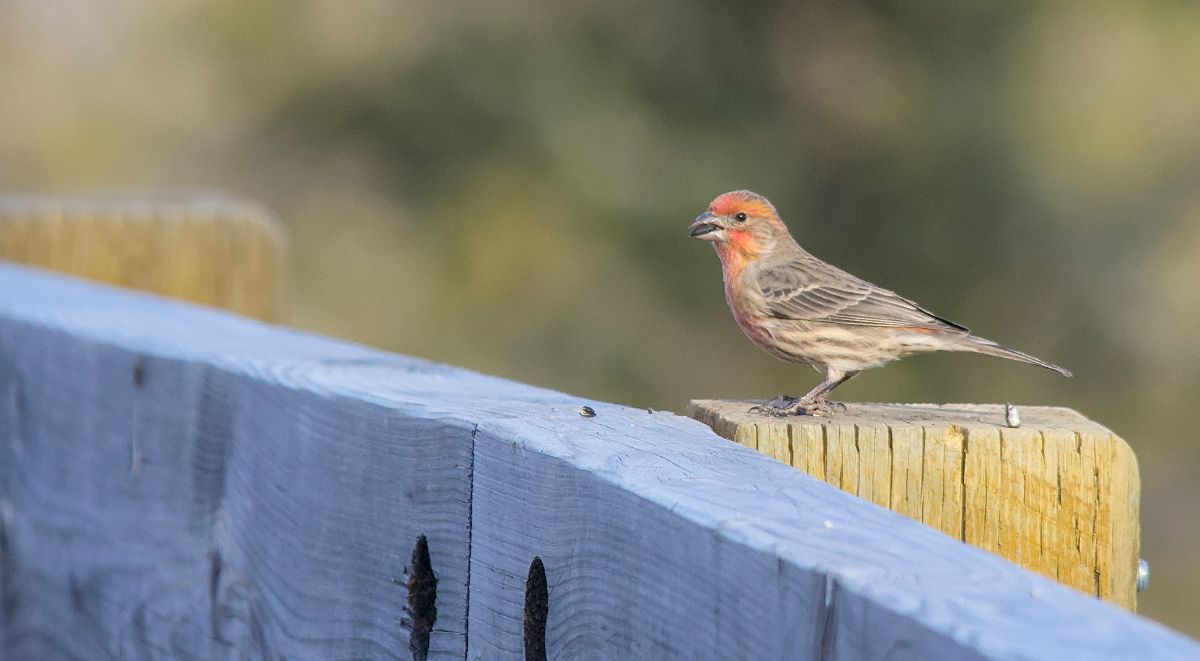
male House Finch
[exif id=”15062″]
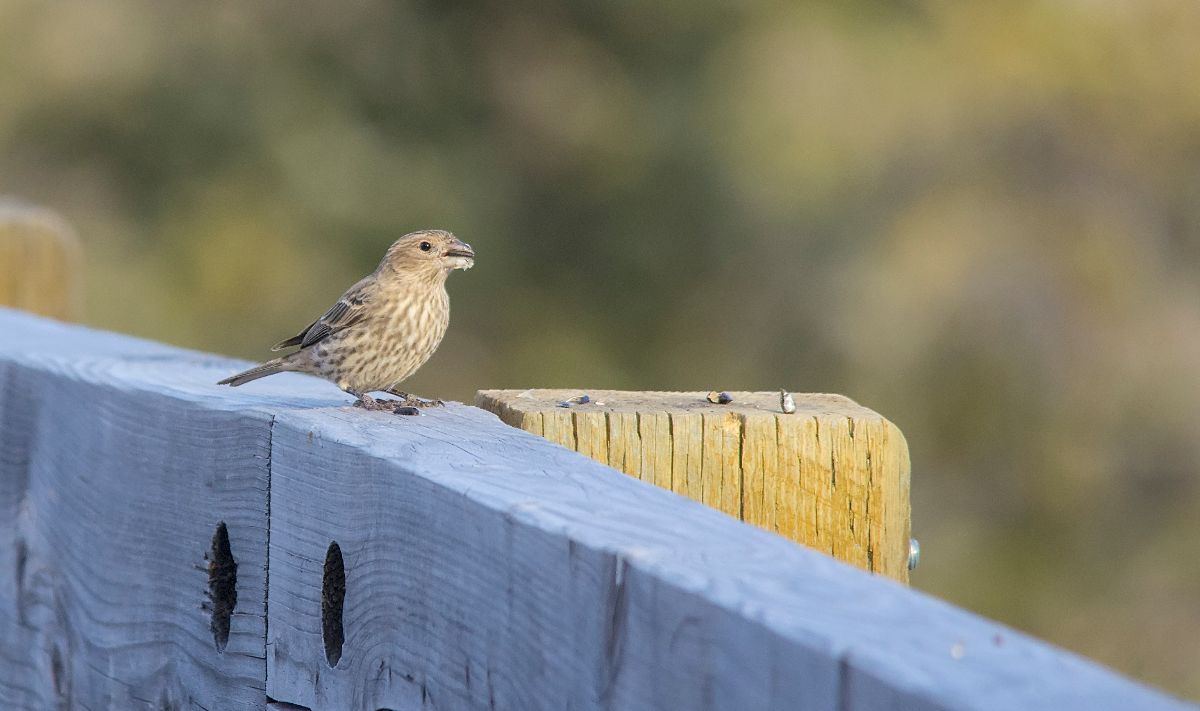
female House Finch
[exif id=”15061″]
Down at the bridge that crosses the small channel that feeds into the Elbow River, our day got a lot more exciting. Not only did we get great looks at another female House Finch, but we spotted this male that looks to have quite the Flames themed dye job in his facial markings. These male House Finches that show a little more orange, and sometimes even yellow in their normally red coloration tell us a bit about what they’re eating. The red pigments that House Finches normally show have found their way into the finch by what it’s been eating. Those that are a bit more yellow or orange simply aren’t eating as much of that red pigment in their food, and so look just slightly different to us. The other finches really don’t seem to take notice of the difference either way though.
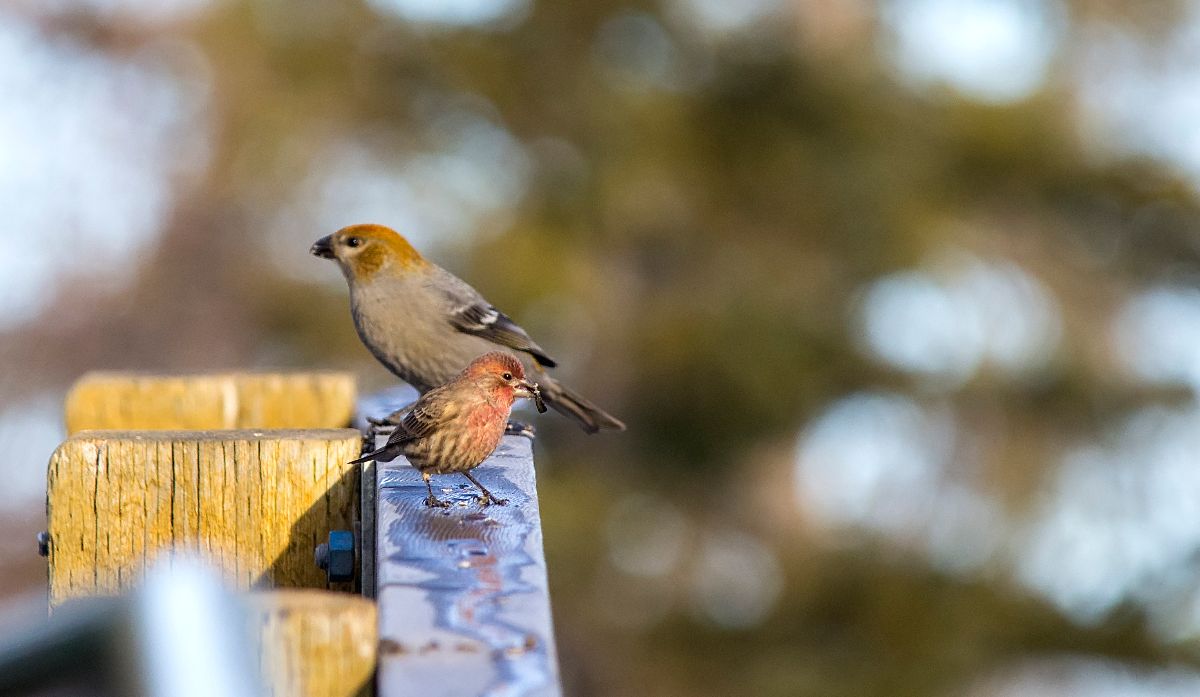
female or juvenile Pine Grosbeak and male House Finch
[exif id=”15051″]
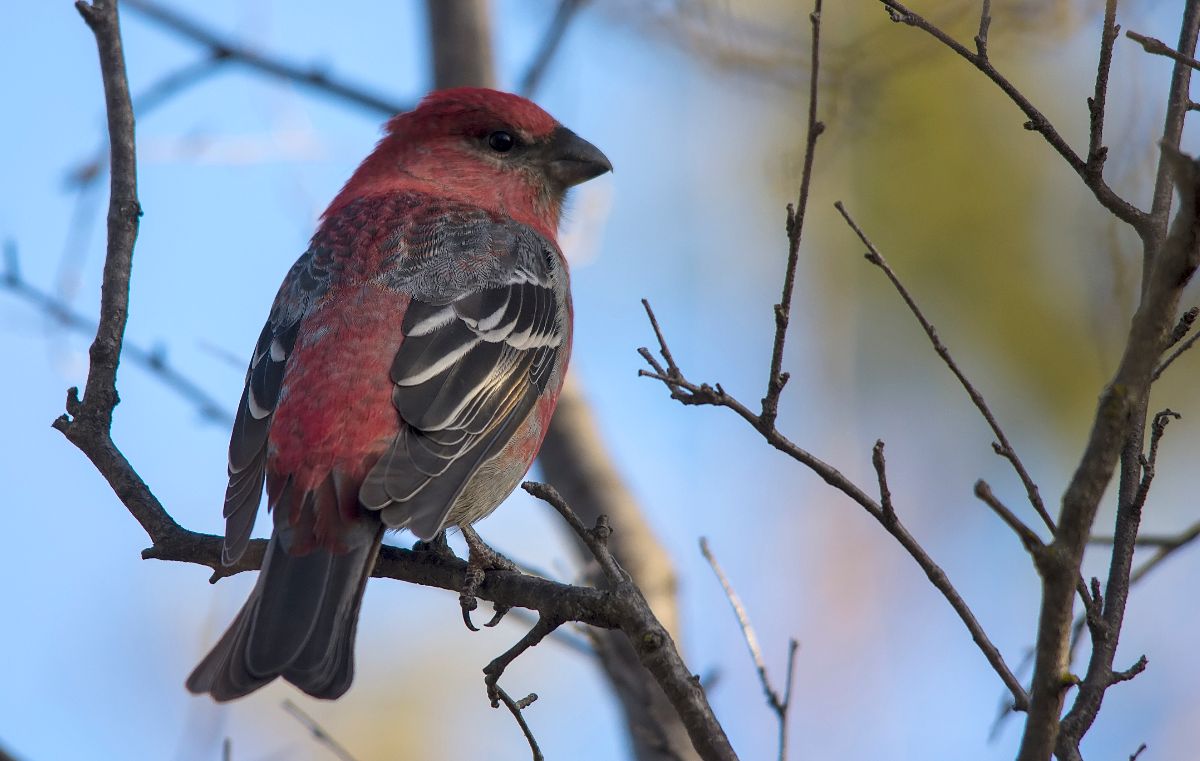
male Pine Grosbeak
[exif id=”15051″]
Along with the House Finches, a fairly large flock of Pine Grosbeaks were in attendance at the bridge, hopping above, below, and all around both sides of the bridge. You can really see just how much bigger the grosbeaks are than their smaller cousins in that first image.
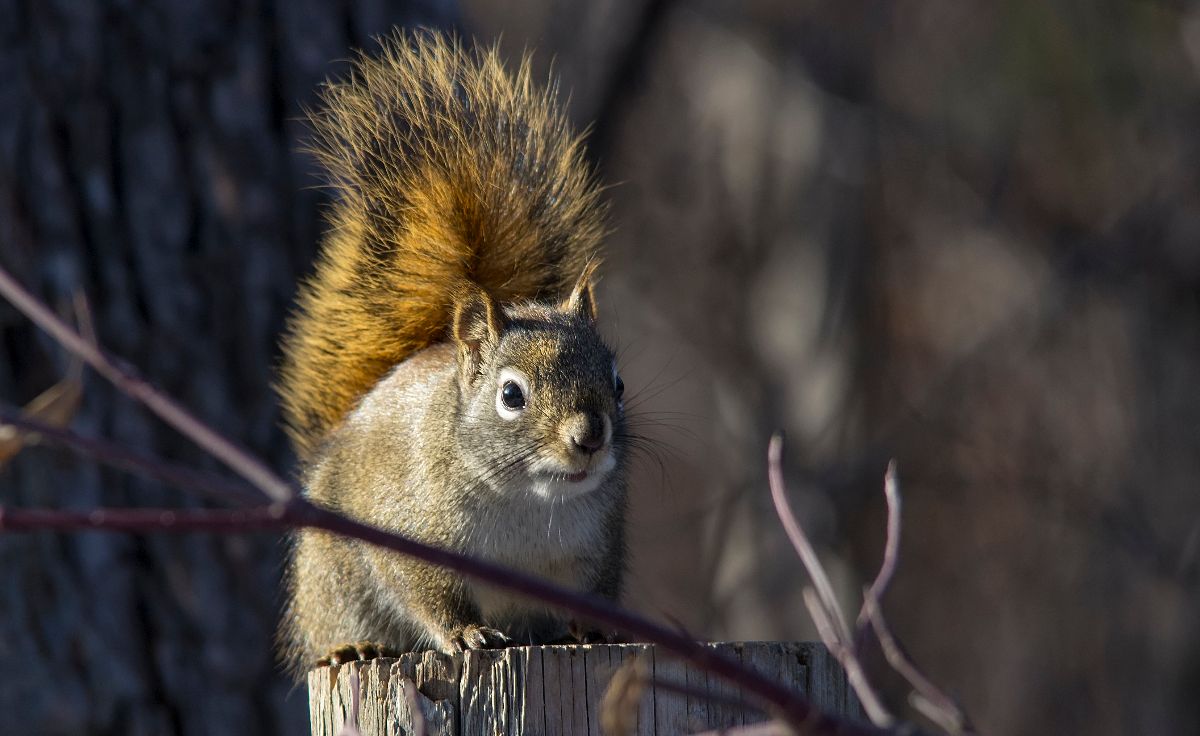
Red Squirrel
[exif id=”15060″]
Unfortunately, once we headed a little further west from the bridge, everything seemed to quiet down and disappear. It wasn’t really that birdy, but there were at least a few Red Squirrels hanging about to pose for the camera.
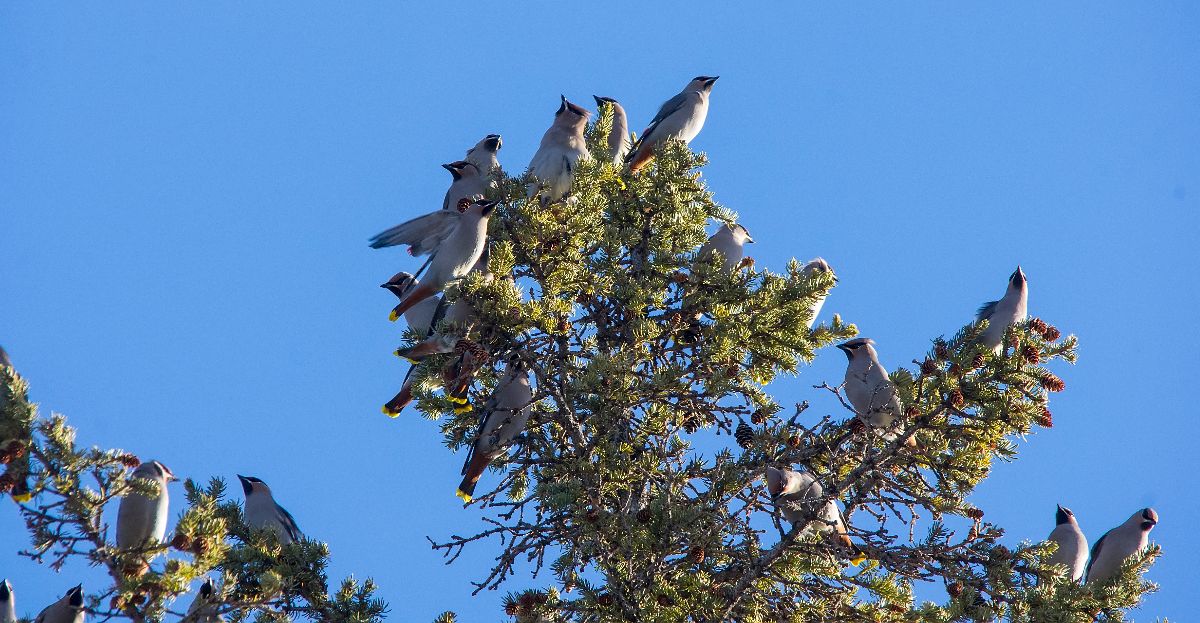
Bohemian Waxwings
[exif id=”15059″]
We also found quite a few Bohemian Waxwings on that outing. These birds tend to trickle into the Calgary area as the fall and winter progress, until all of a sudden there are thousands of them all over town!
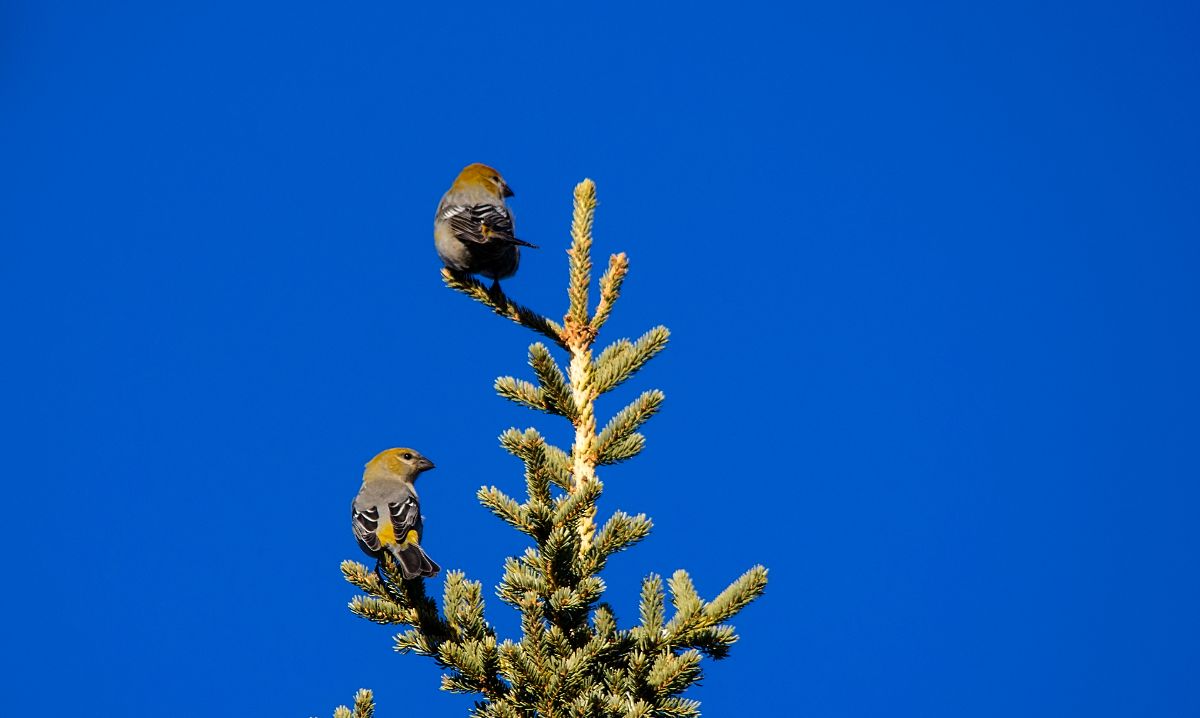
immature or female Pine Grosbeaks
[exif id=”15058″]
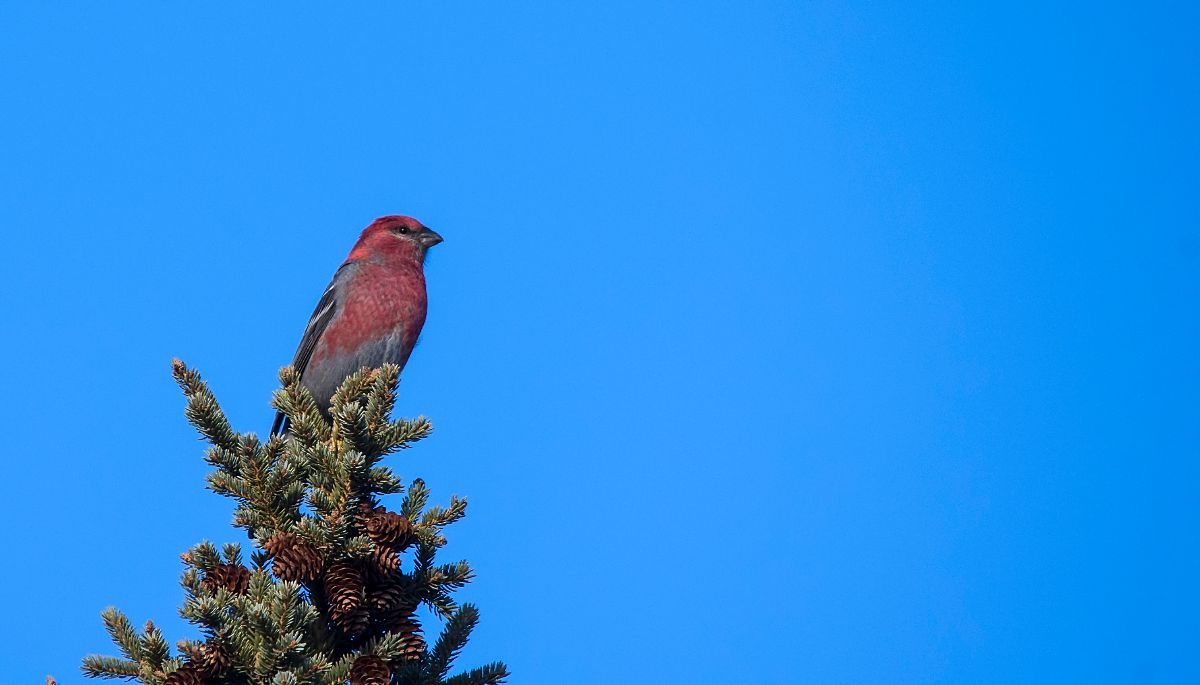
male Pine Grosbeak
[exif id=”15056″]
On our way back at the bridge and finishing up our day, we found a few more Pine Grosbeaks perched high up in the spruce trees, almost displaying their deep, vibrant colours. I just can never resist taking photos of these guys and gals. They’re one of the best winter birds we get here, and so many birders consider them the iconic “Christmas bird”.
And that was another week out with the Friends of Fish Creek!
Just a couple more weeks of blog updates until the New Year and a whole new Winter Birding Course!
Have a great week, and good birding!
